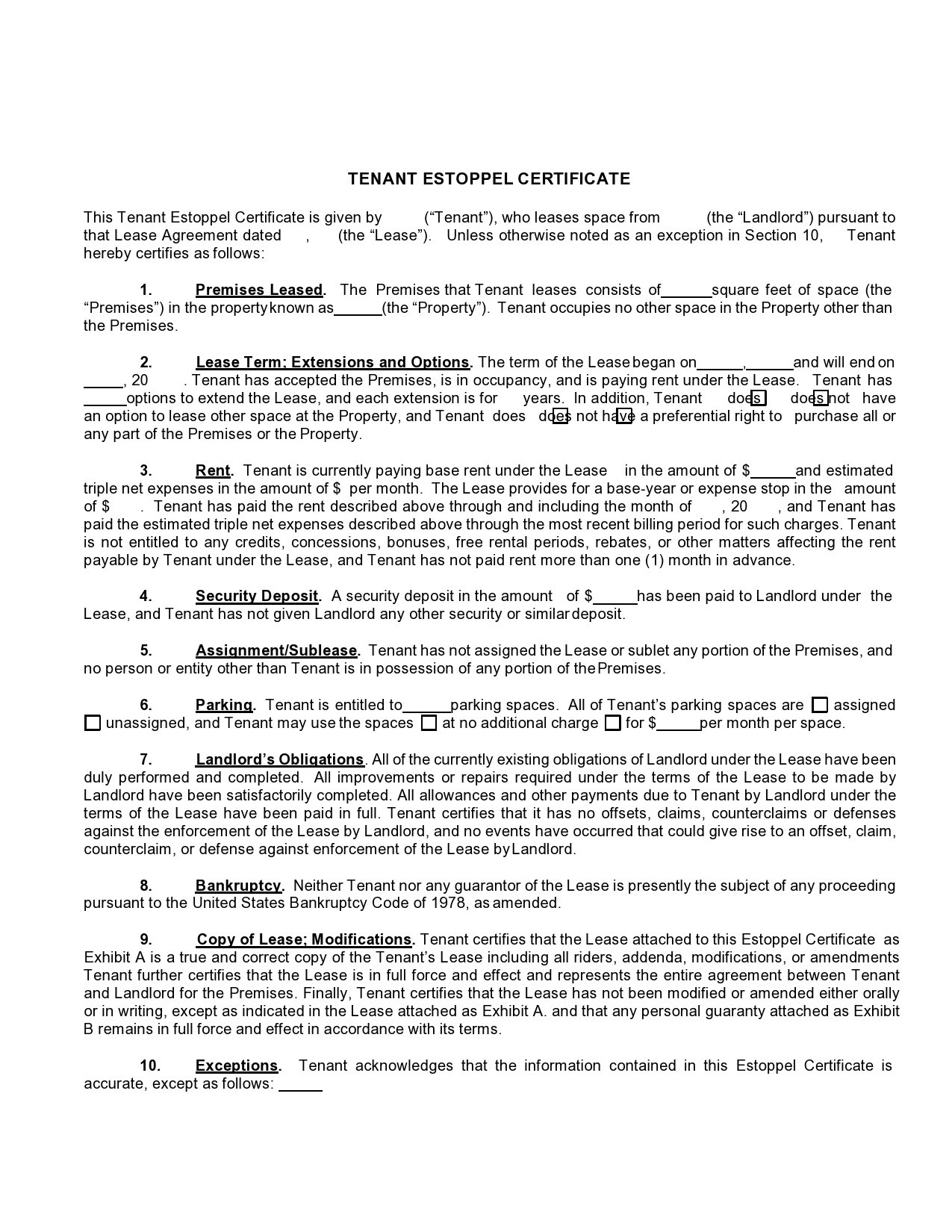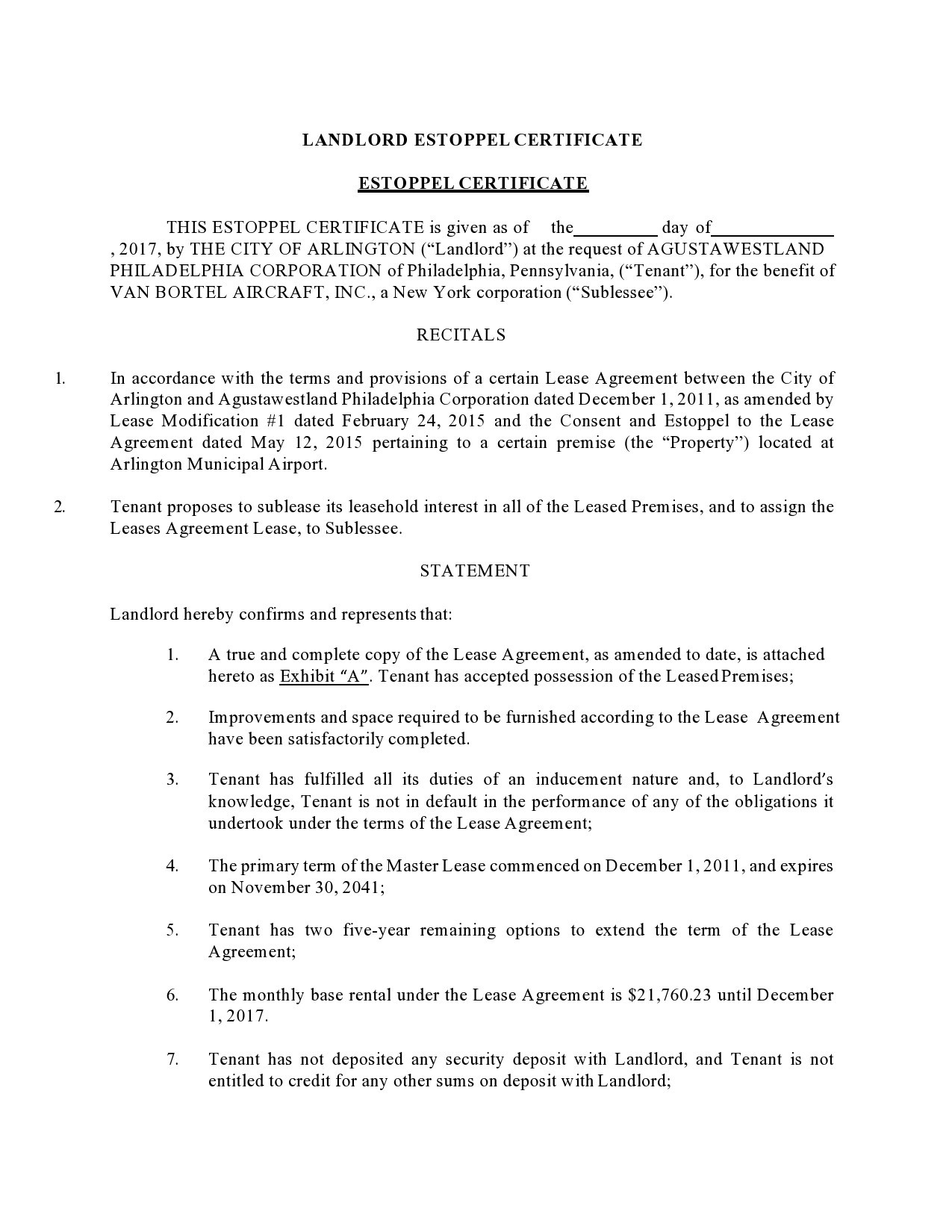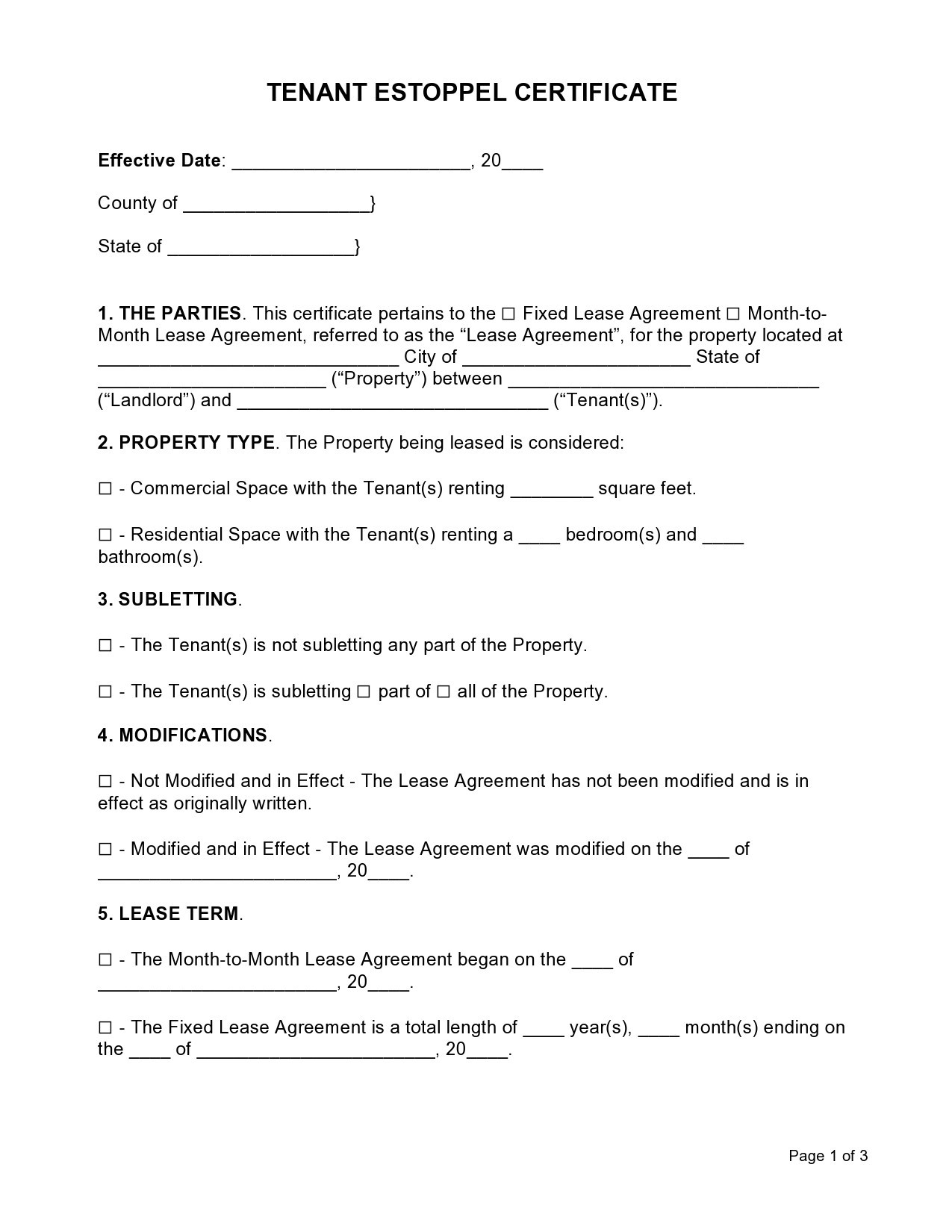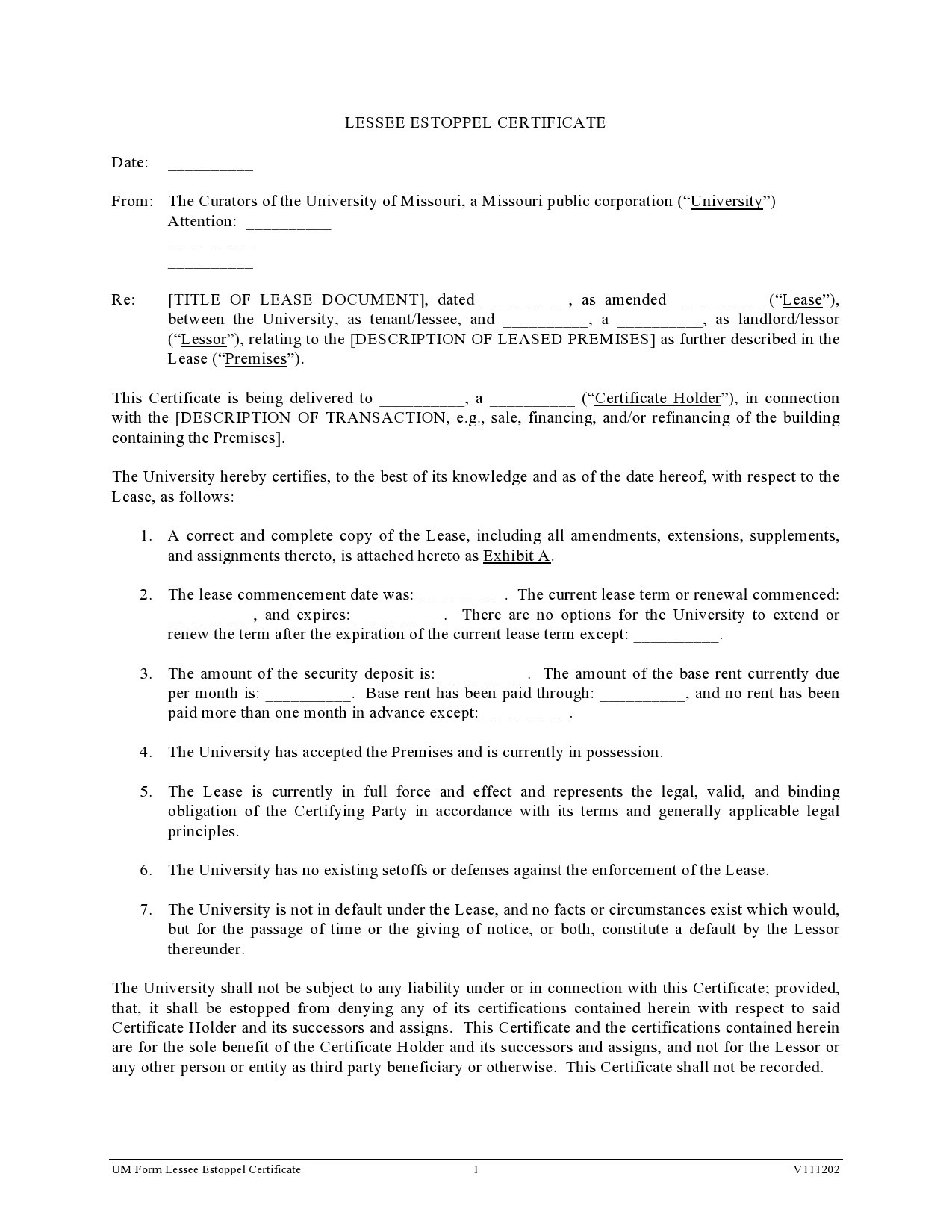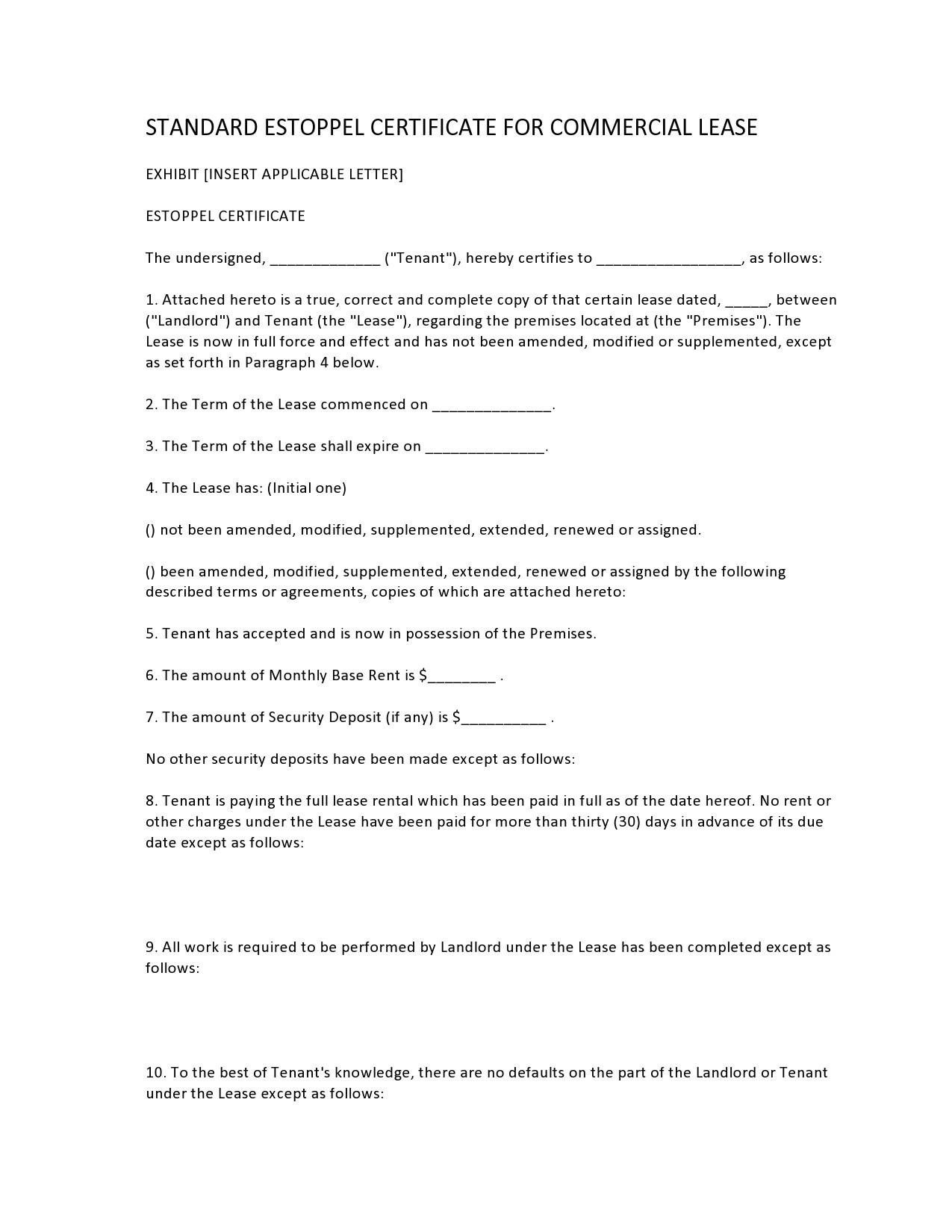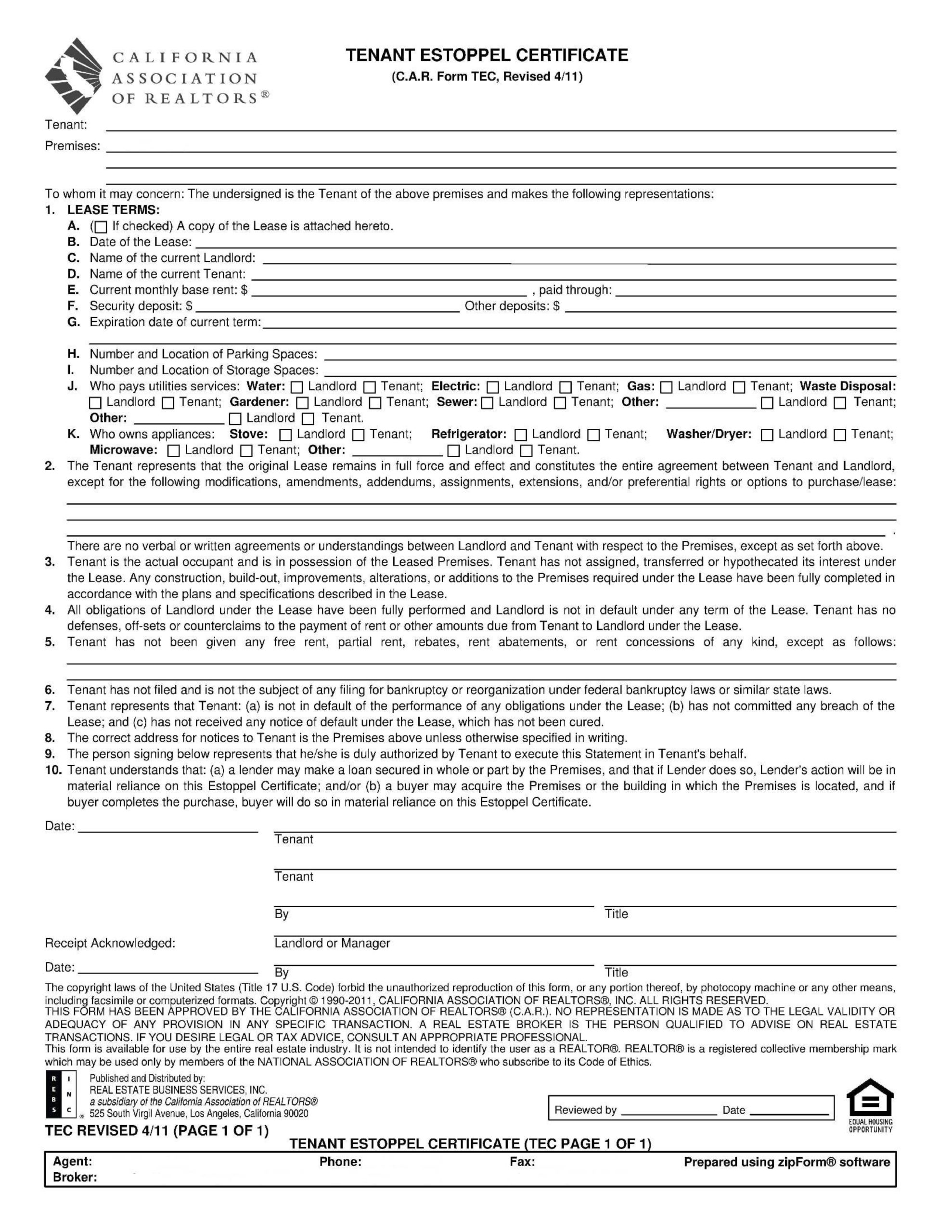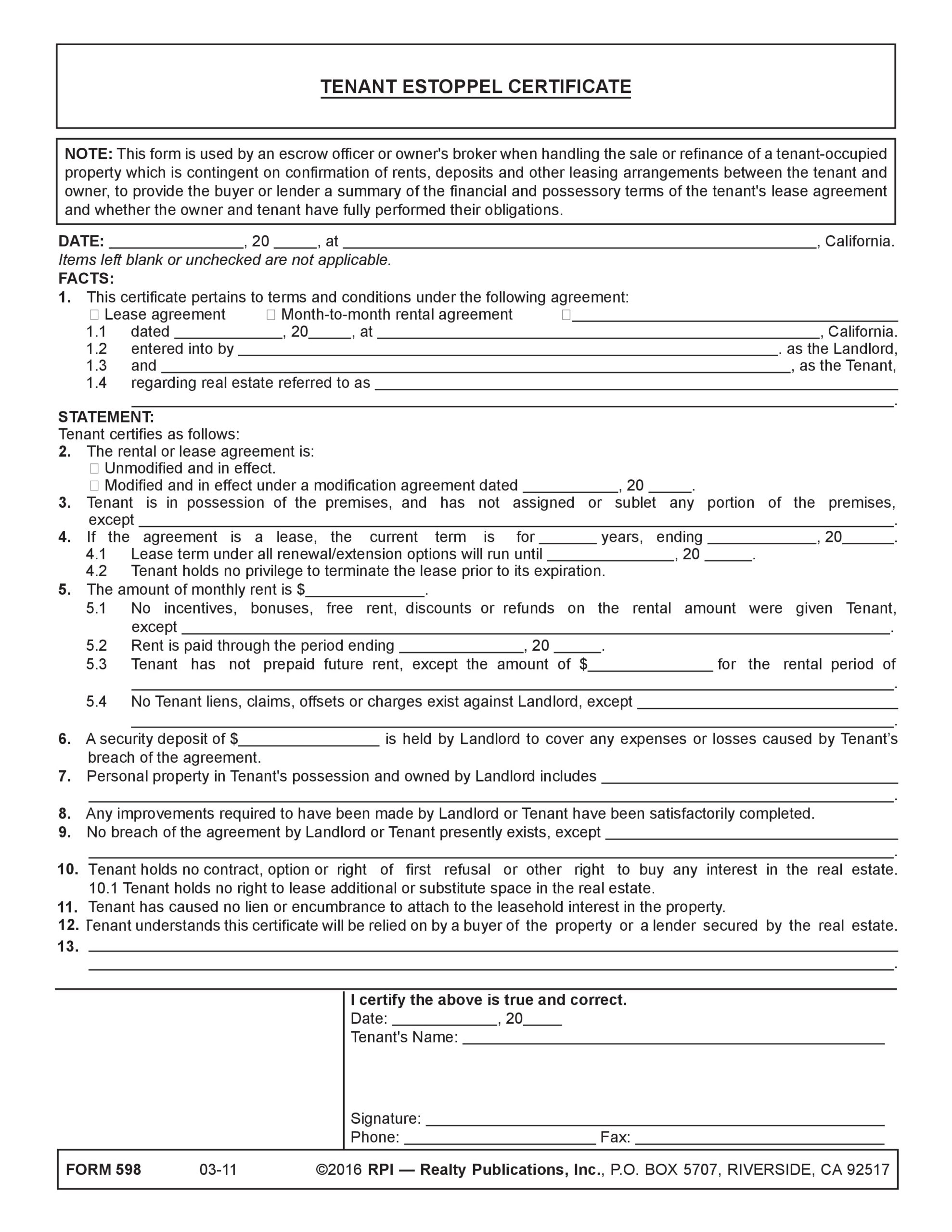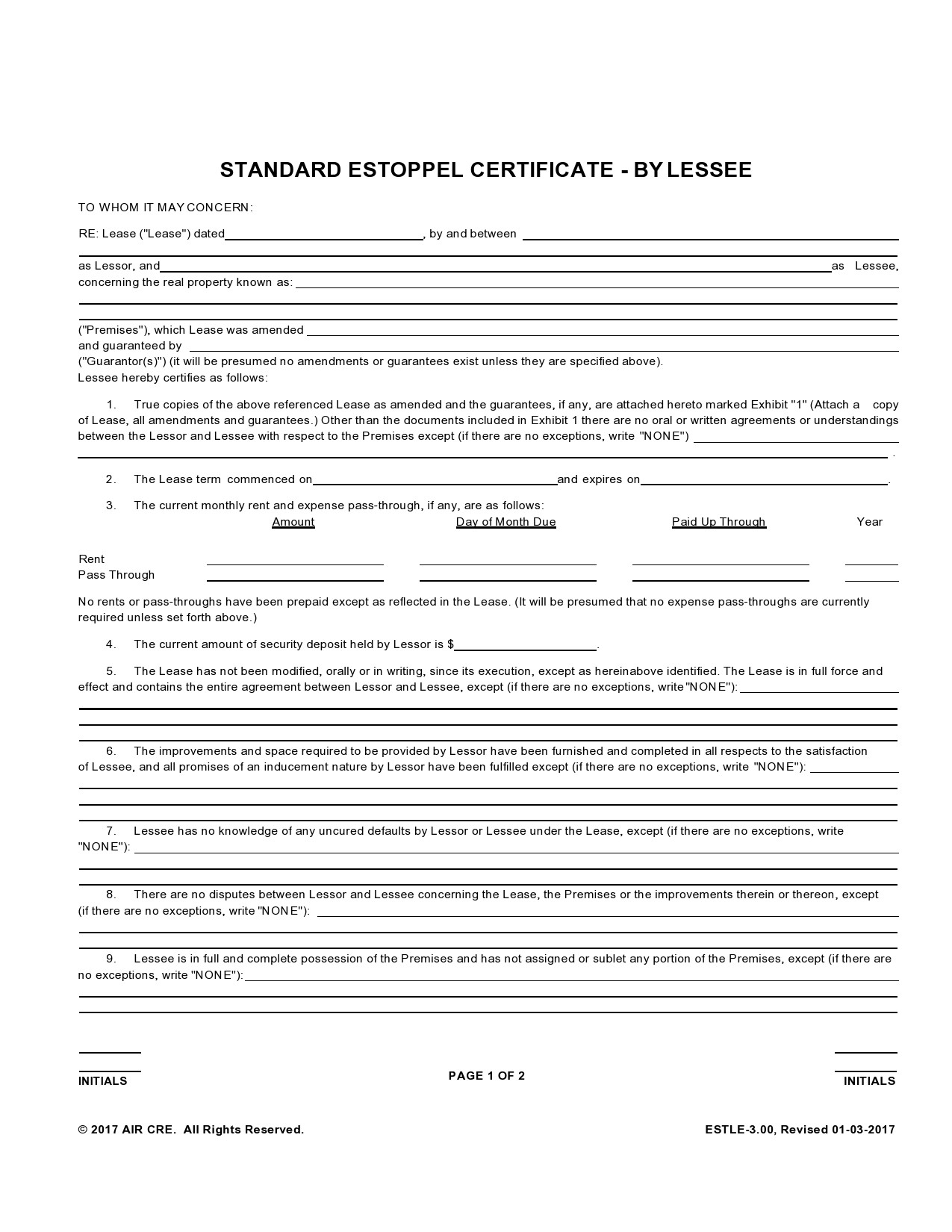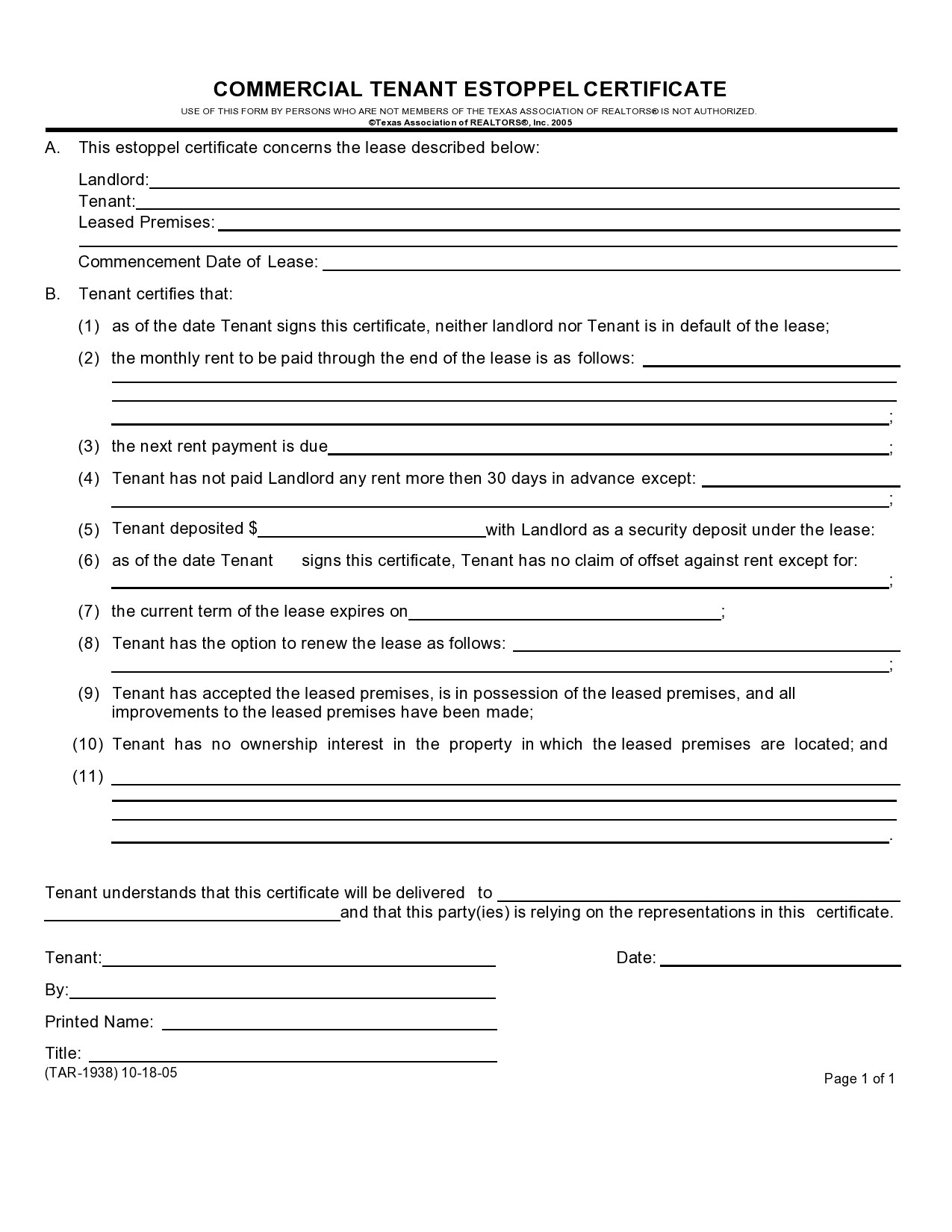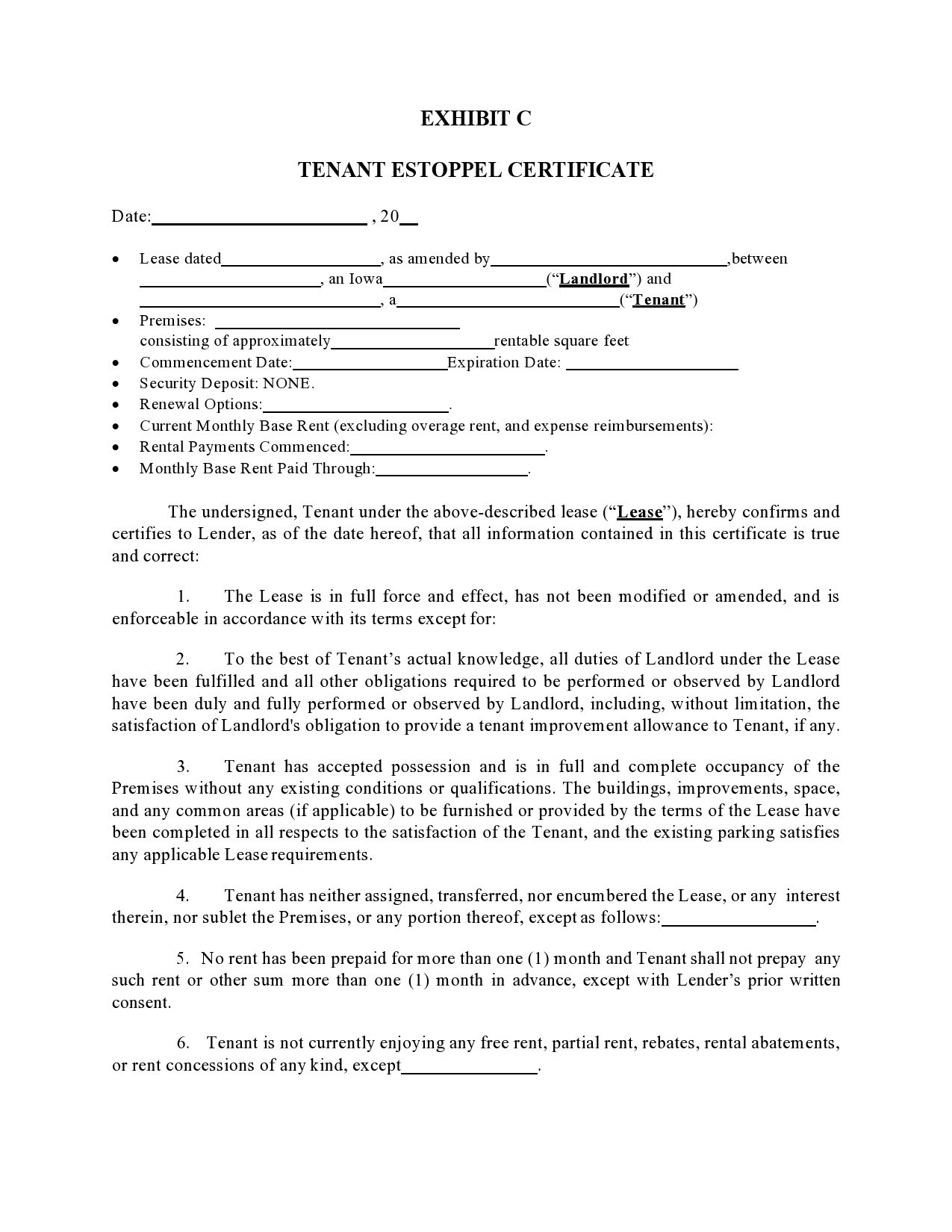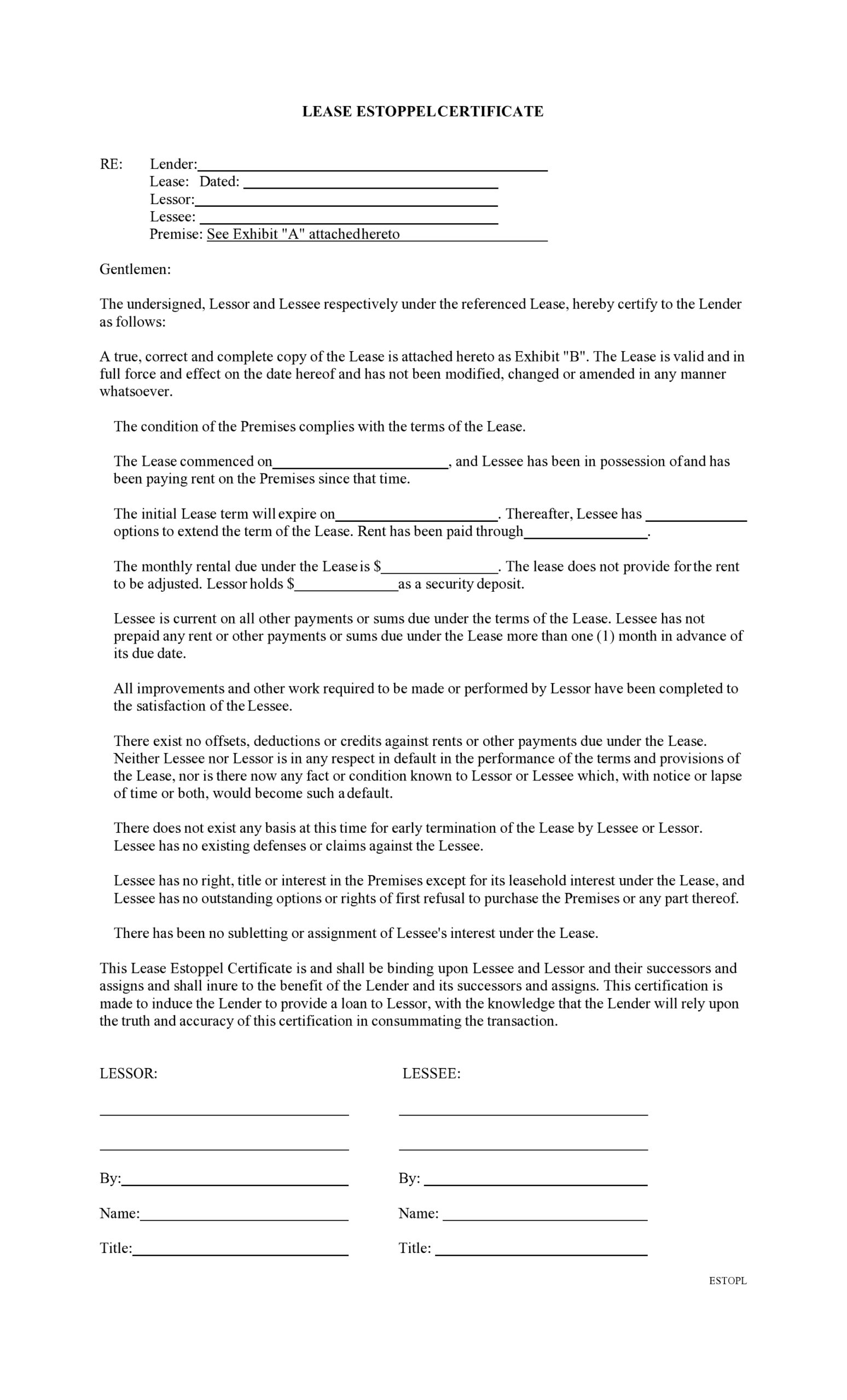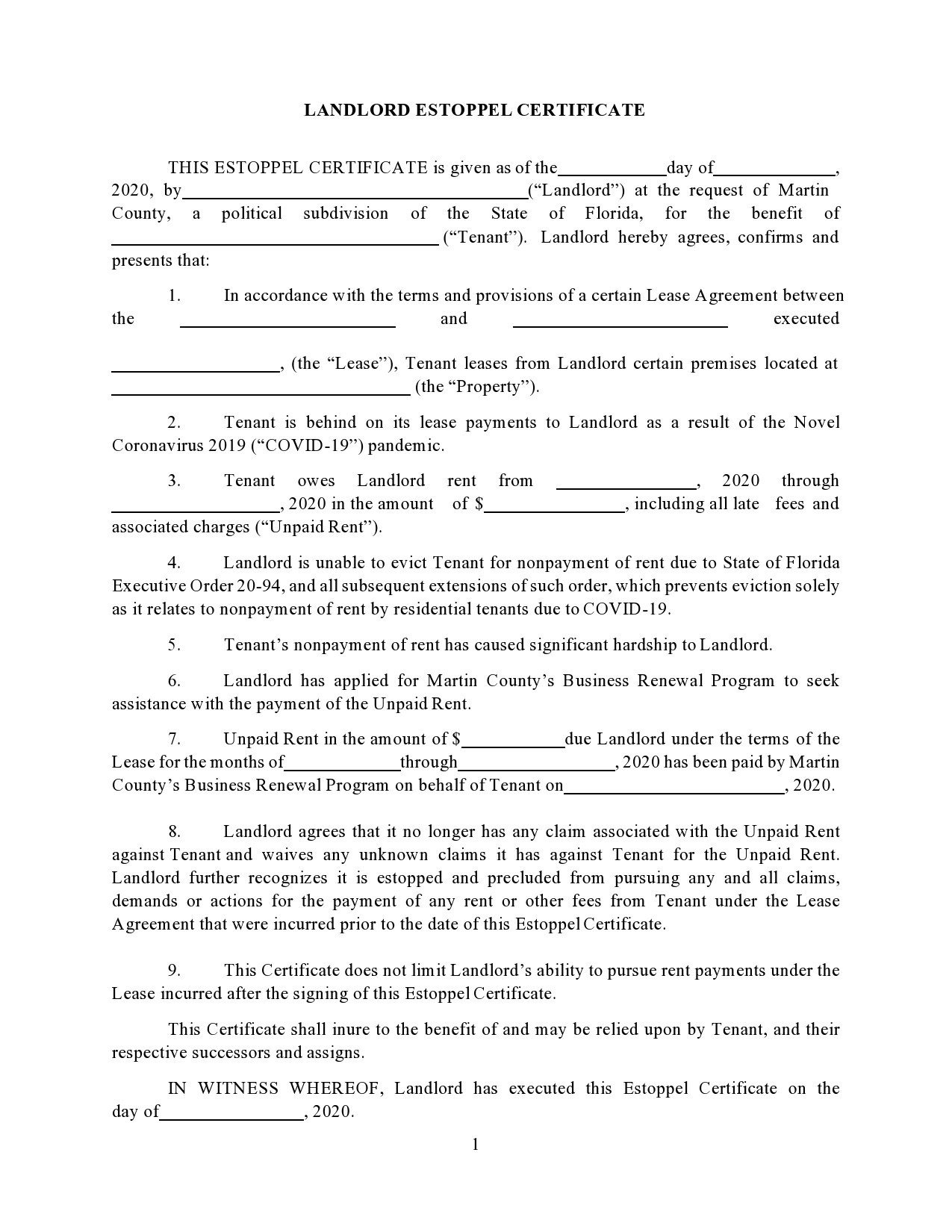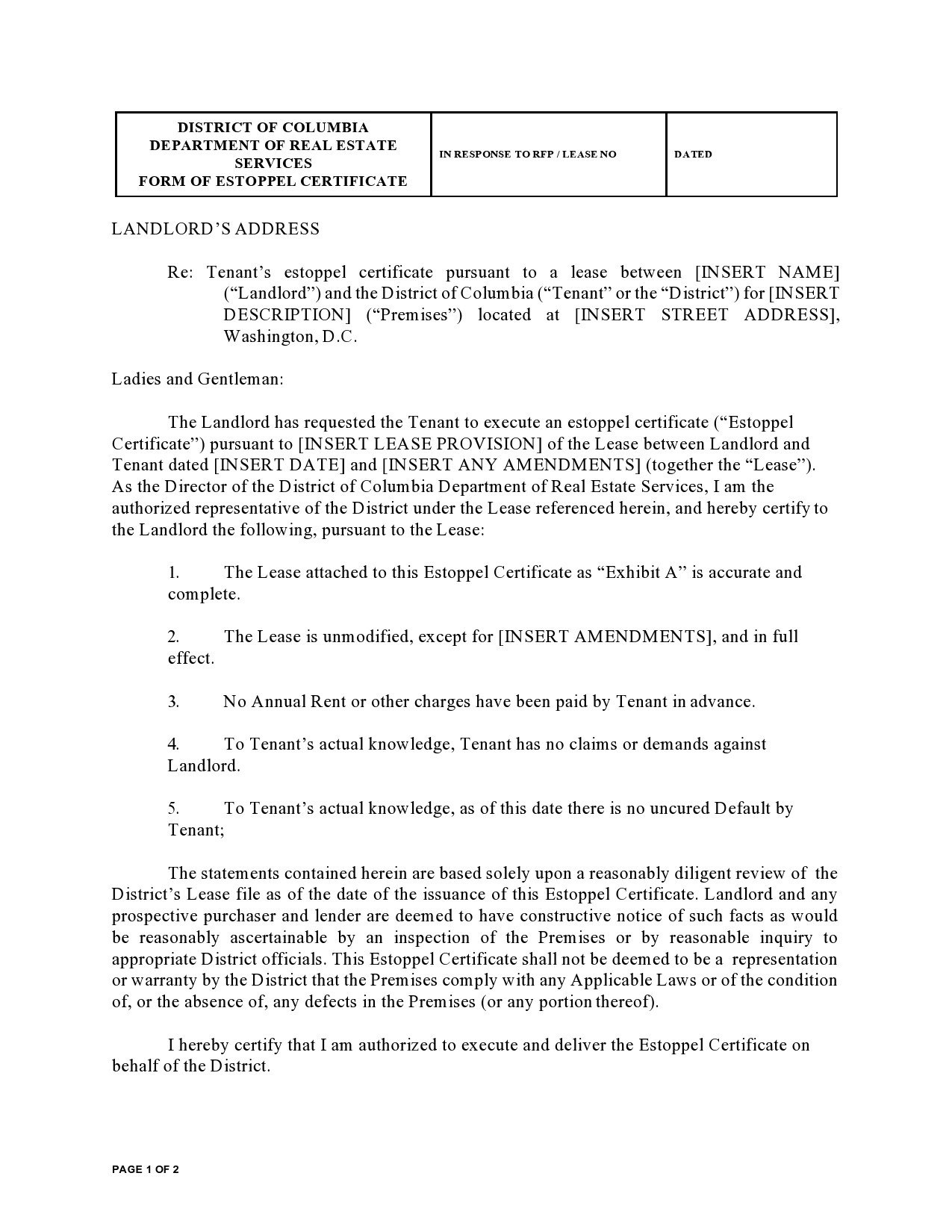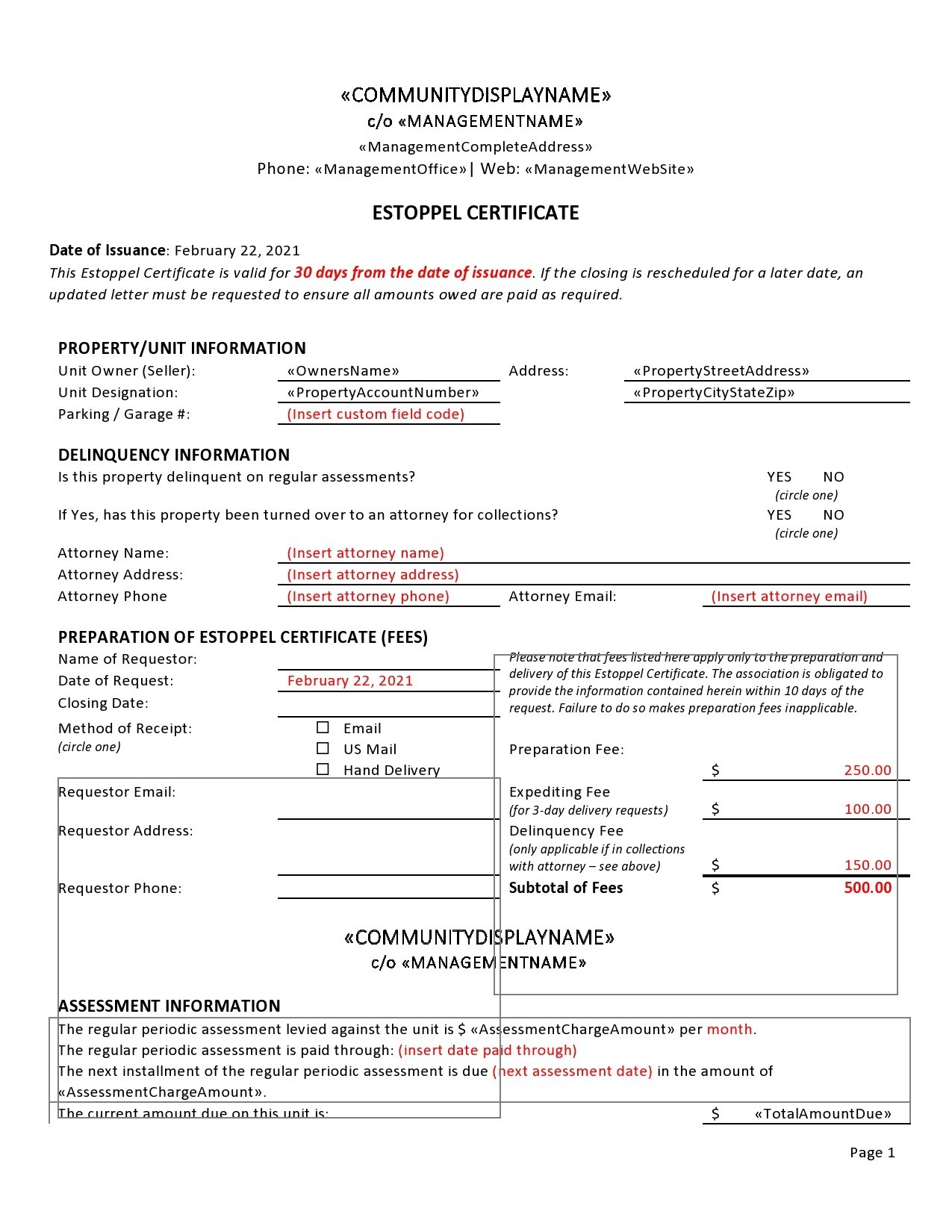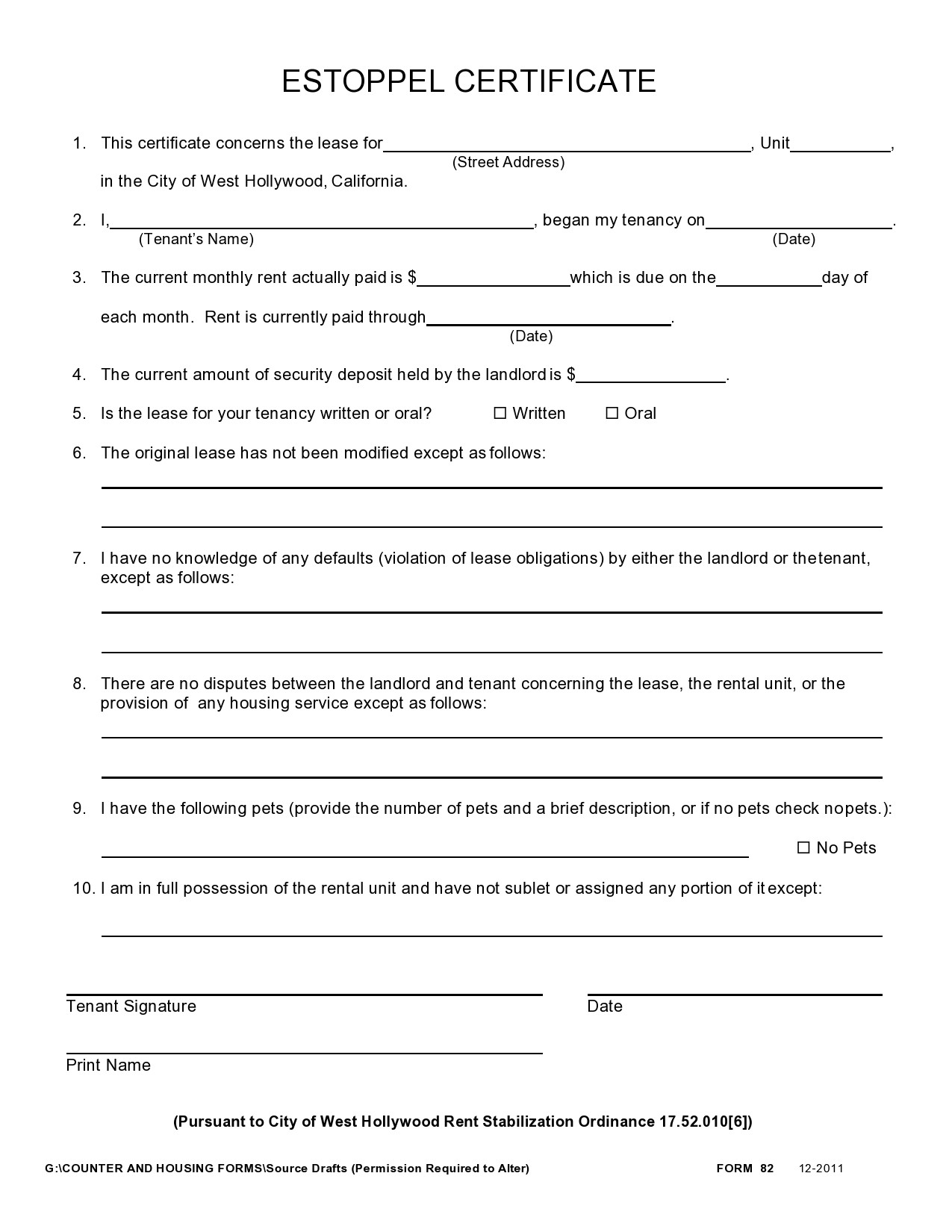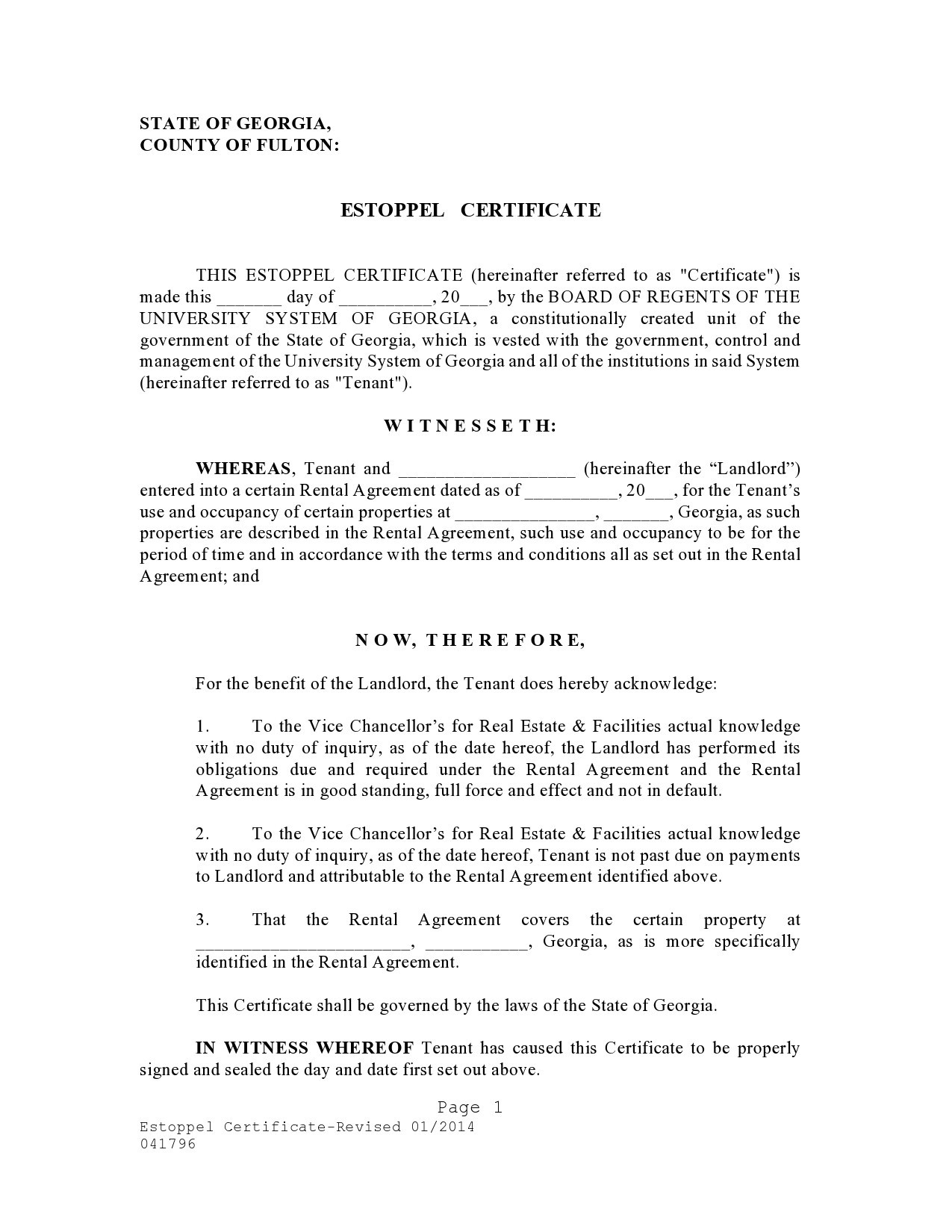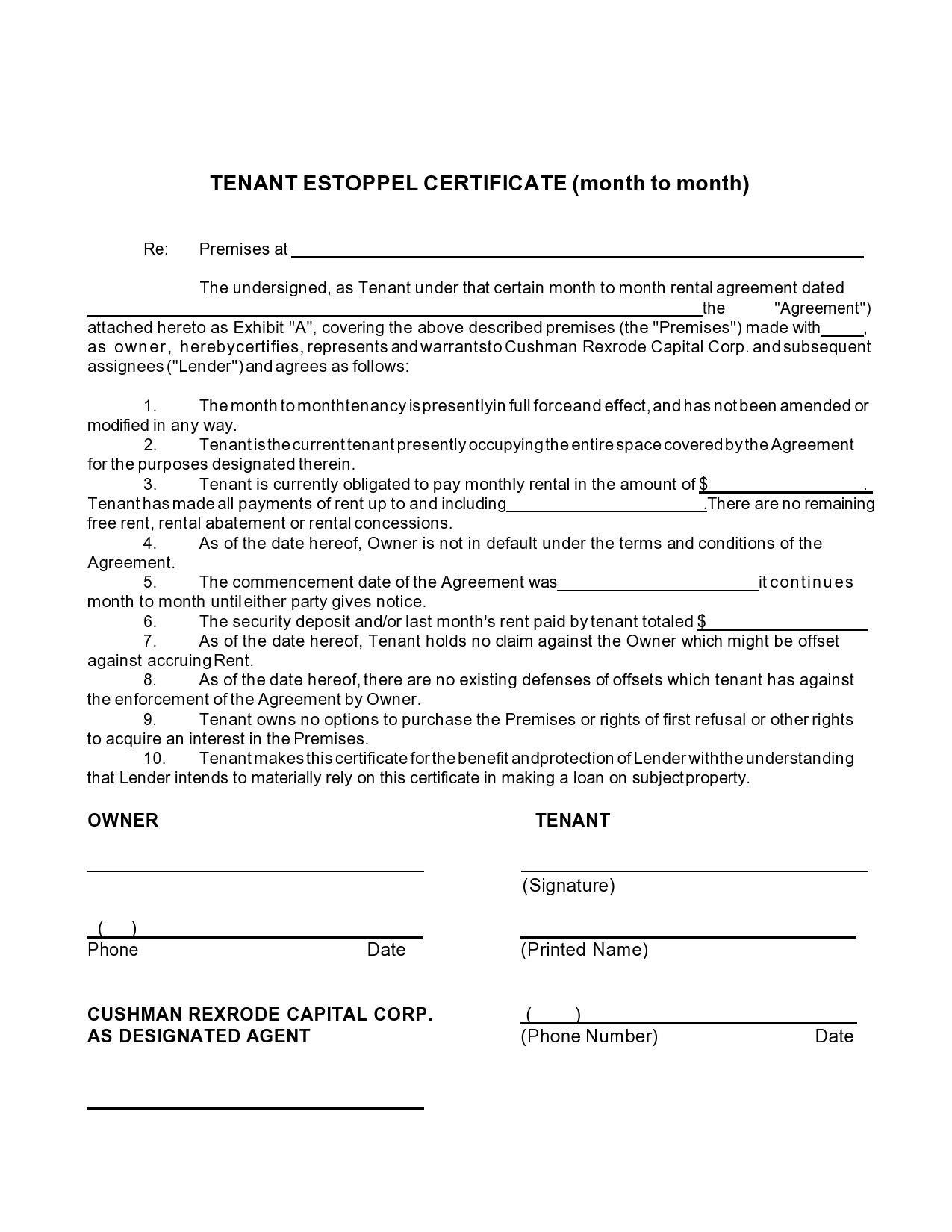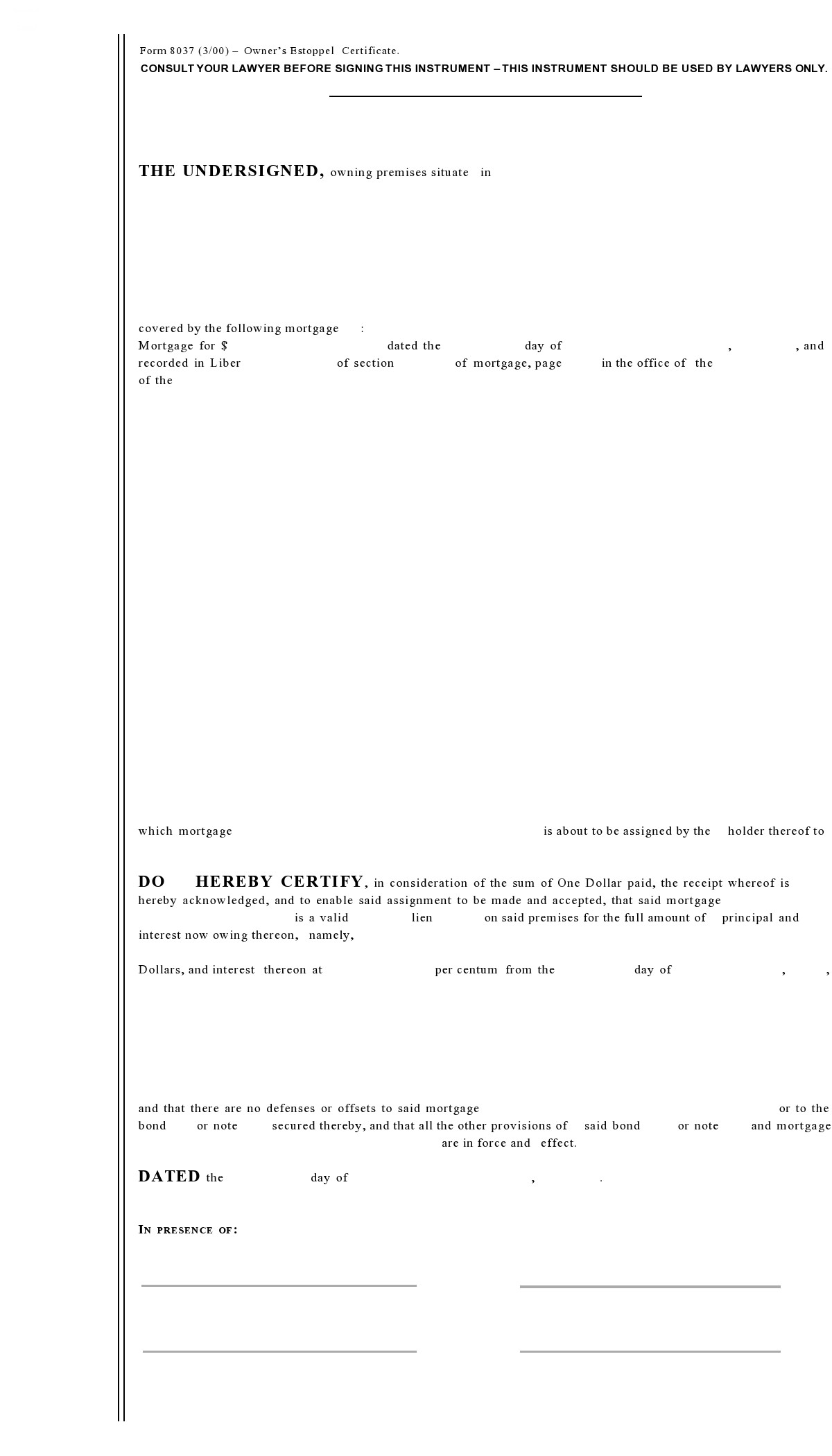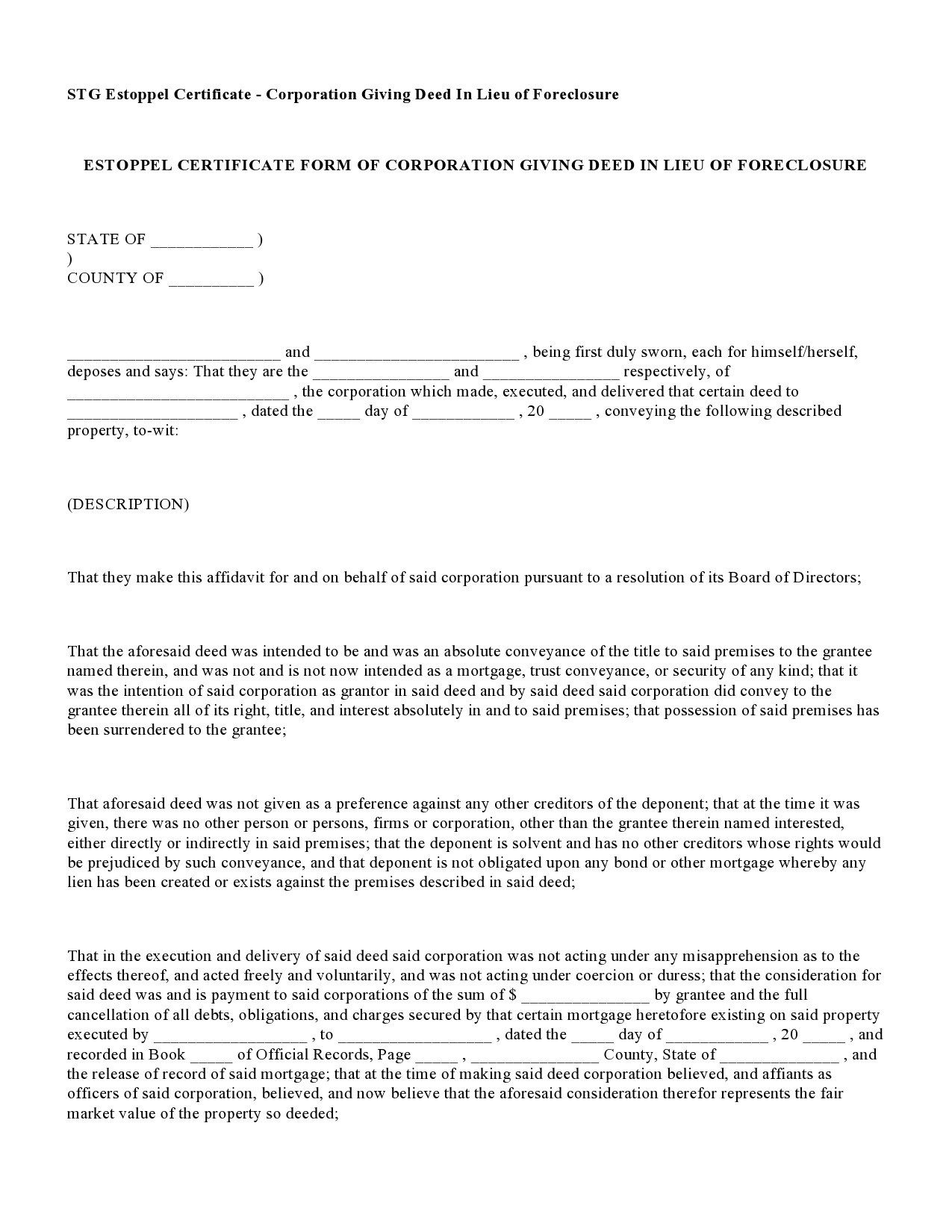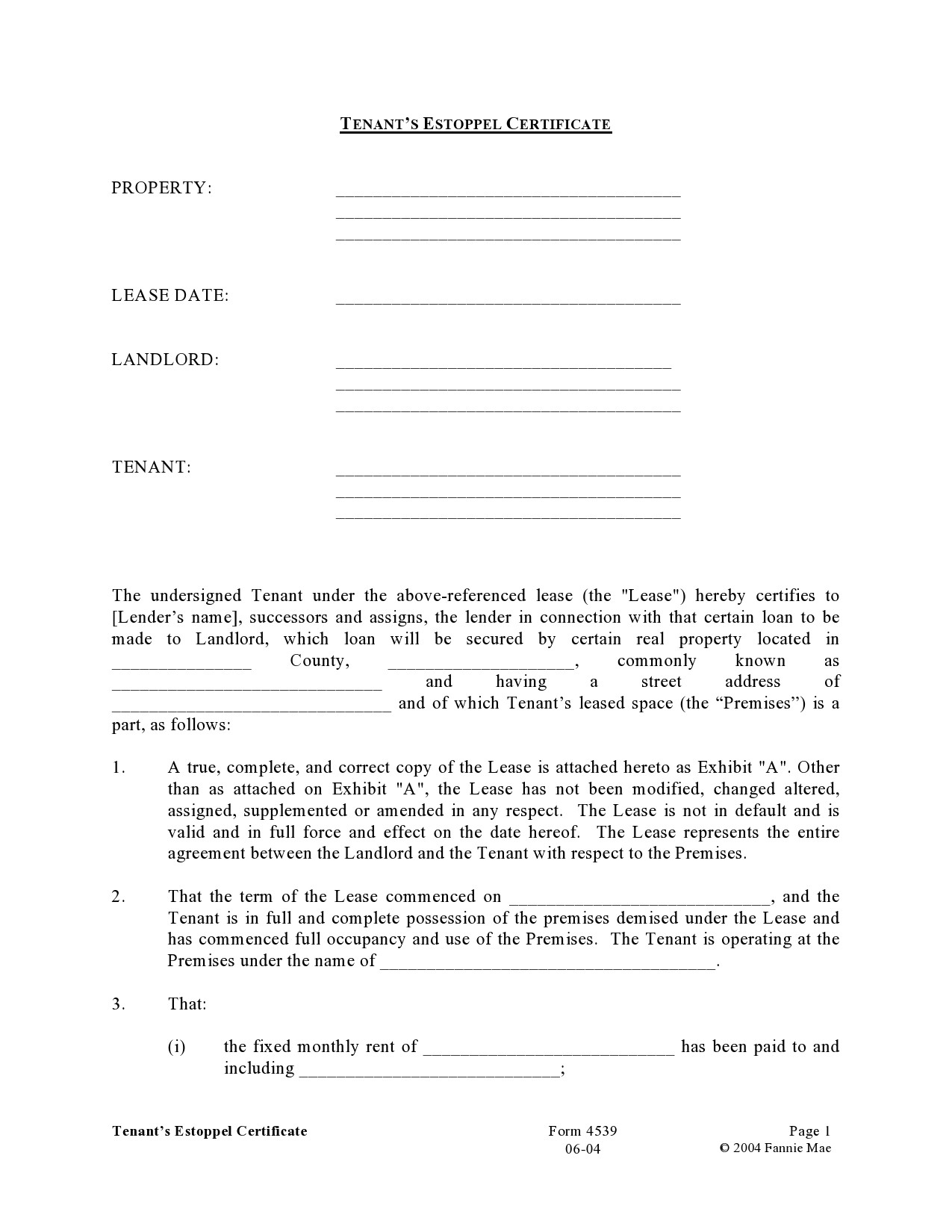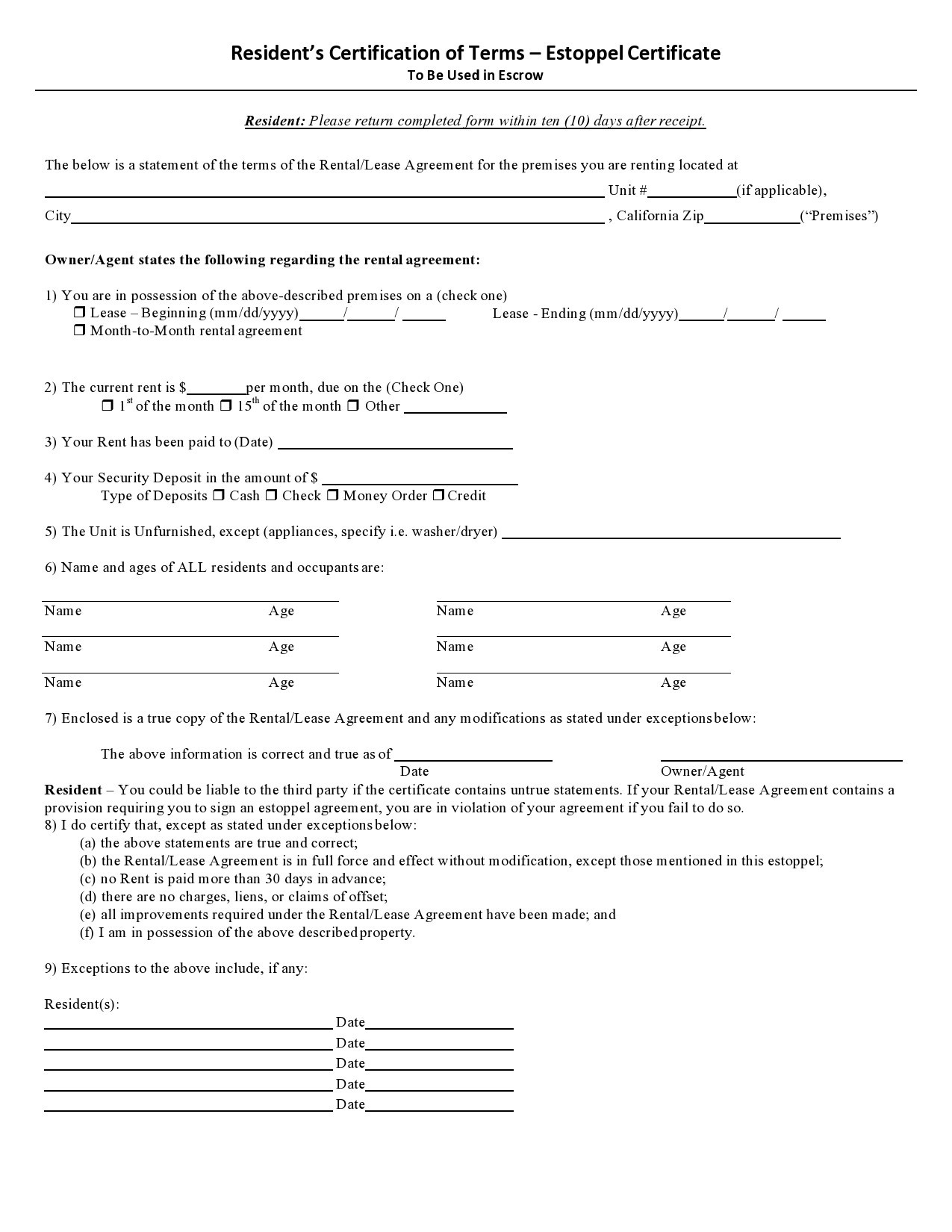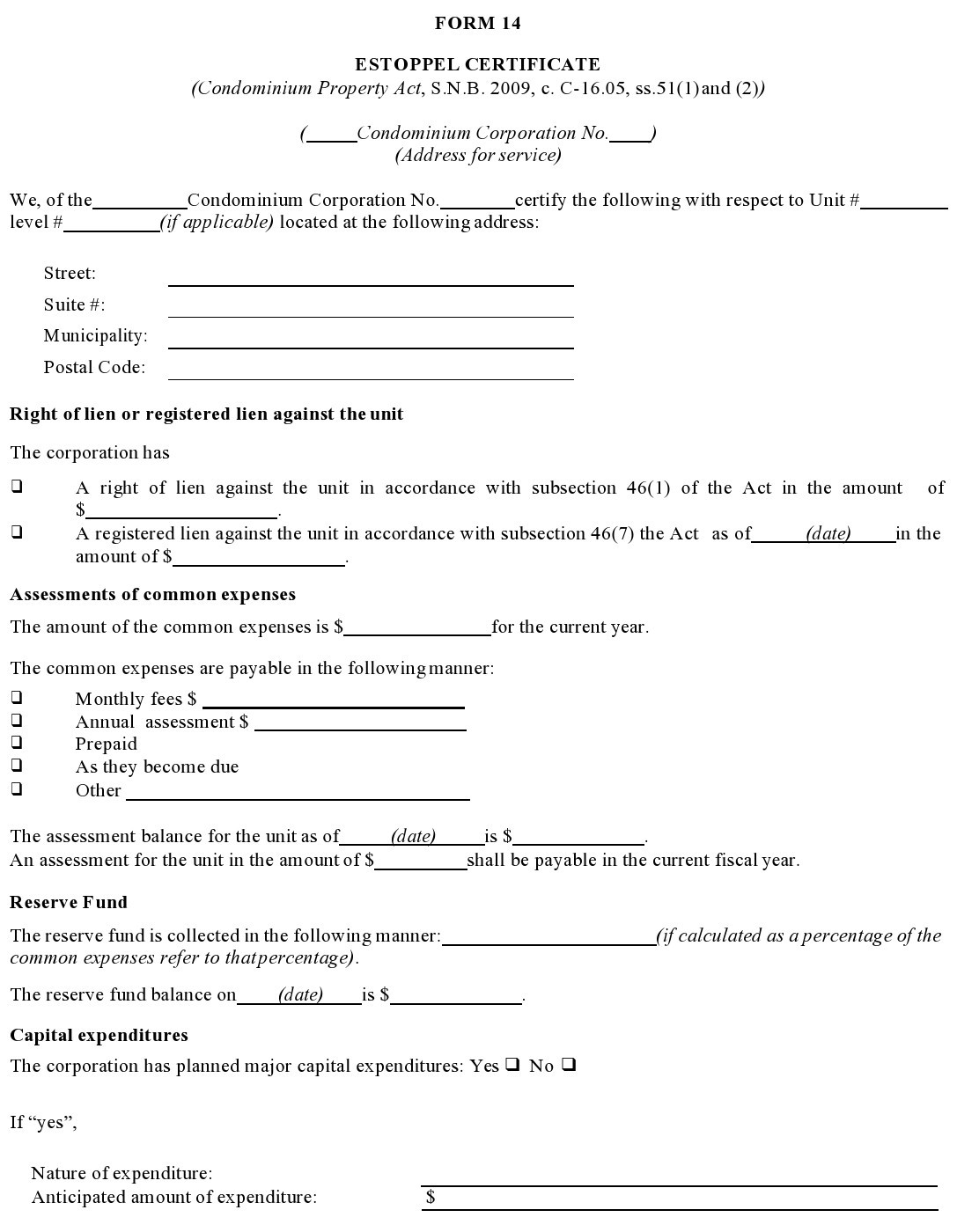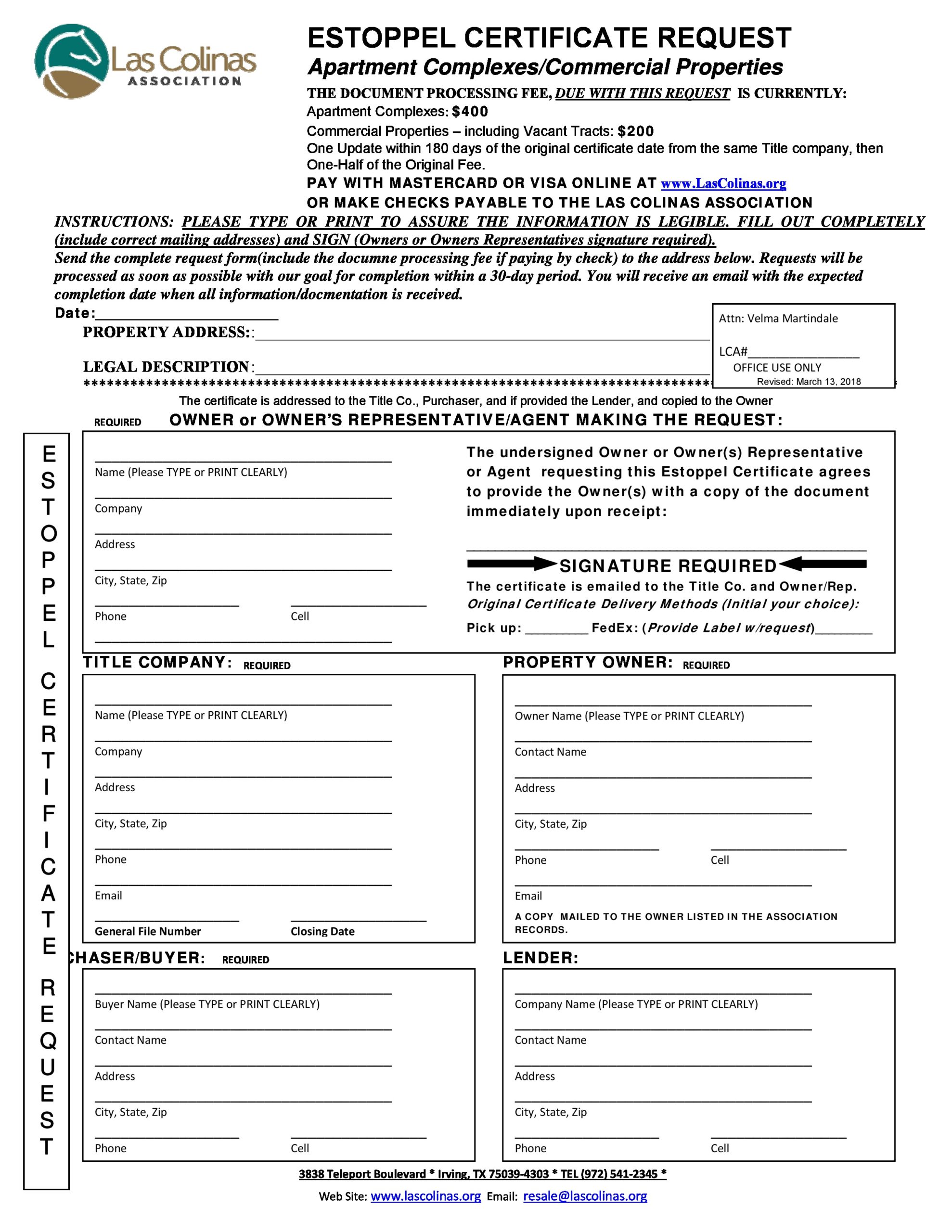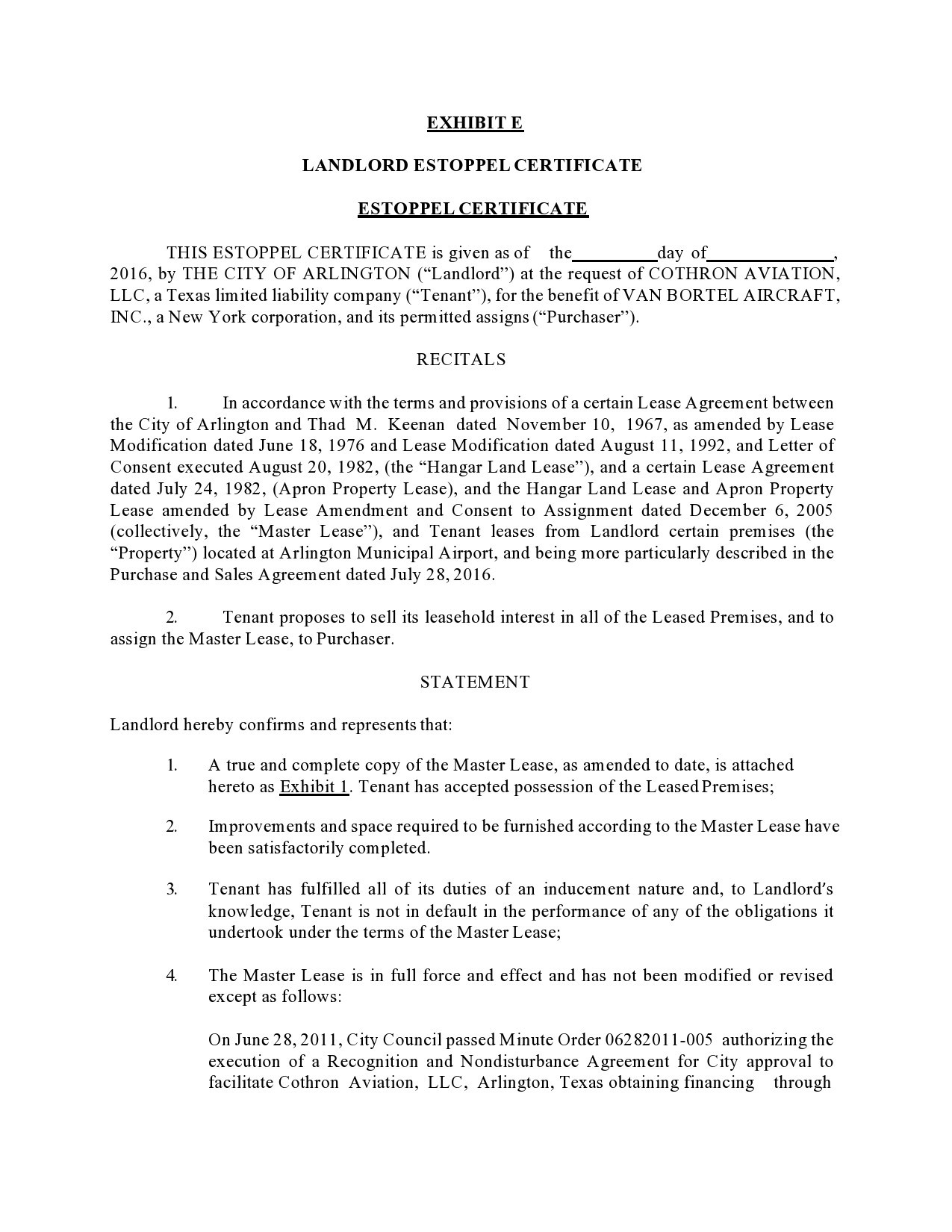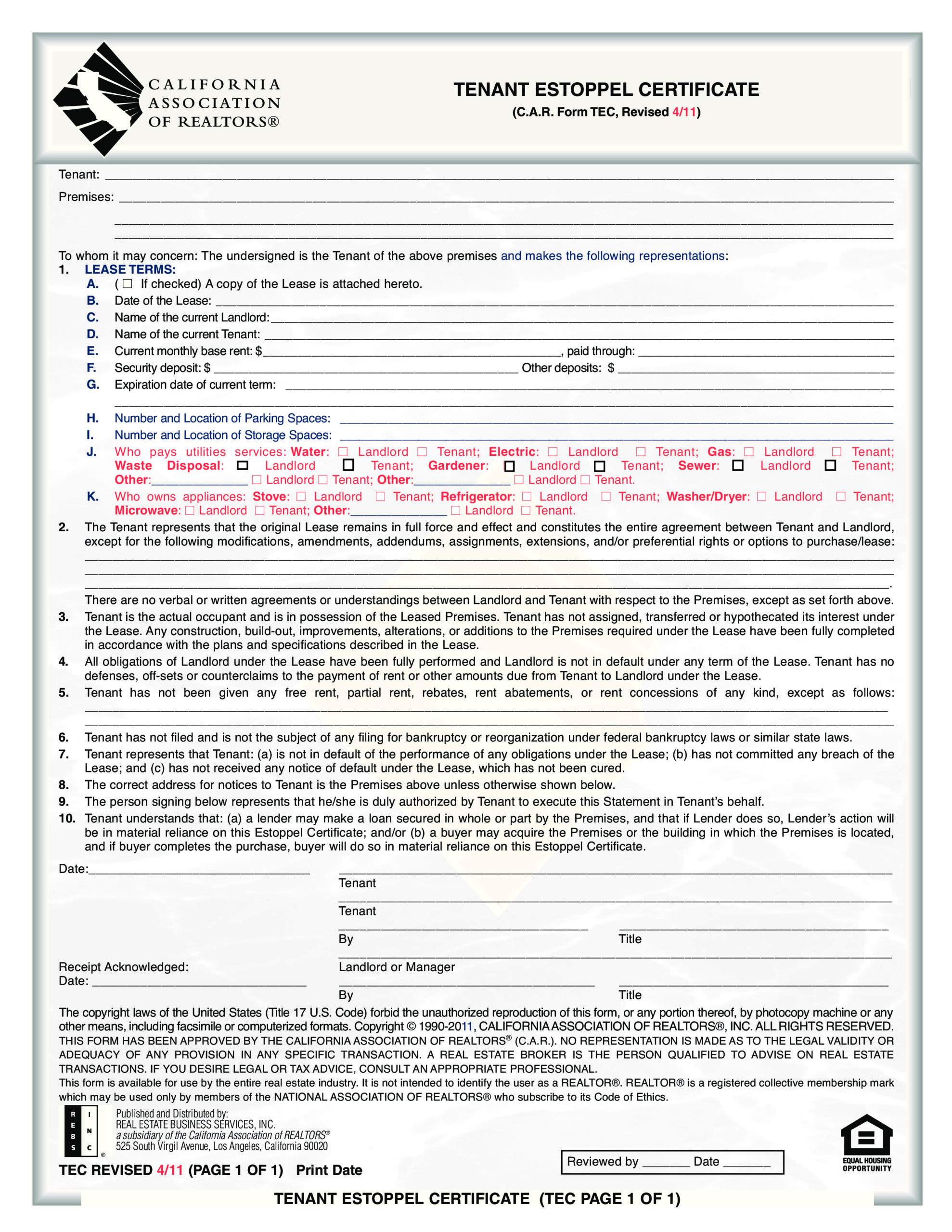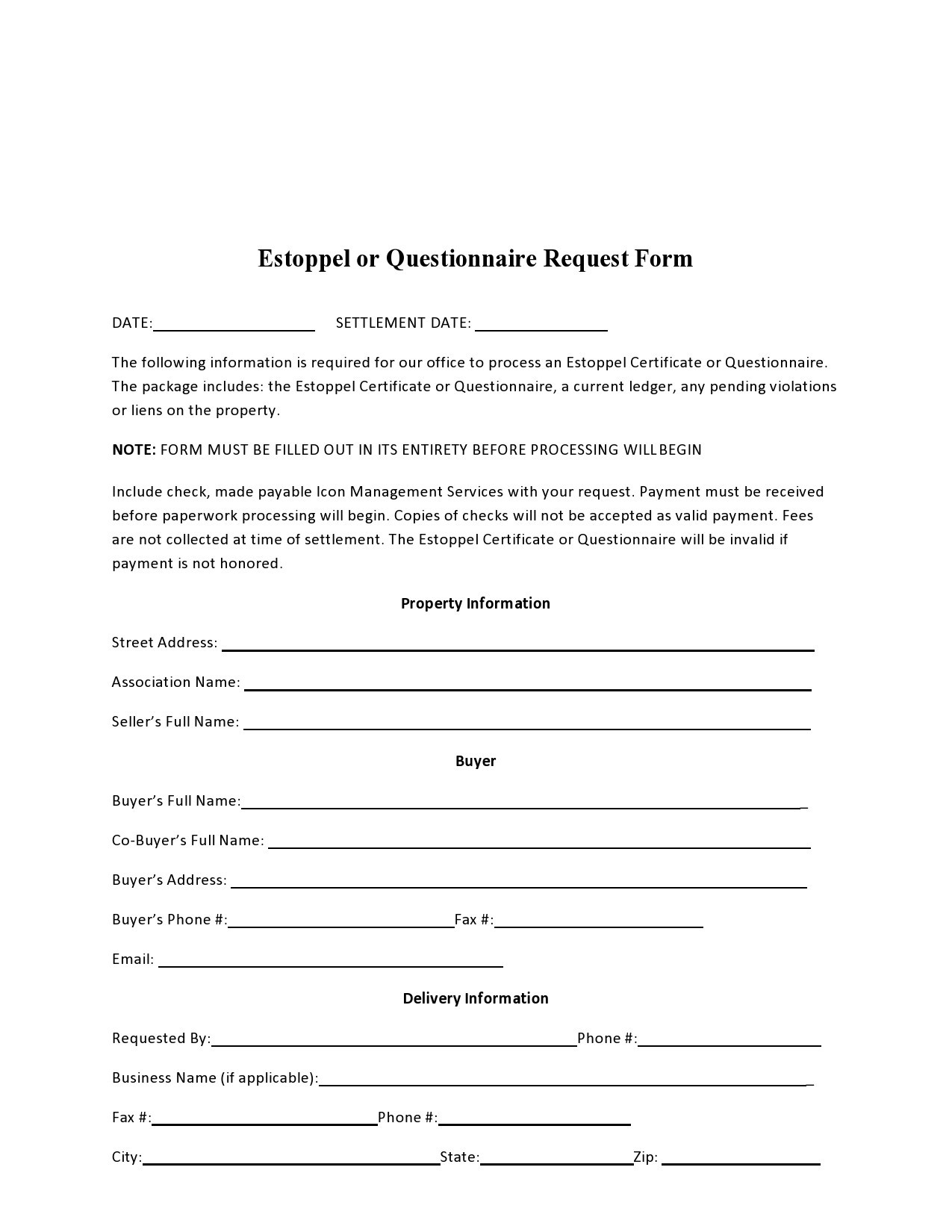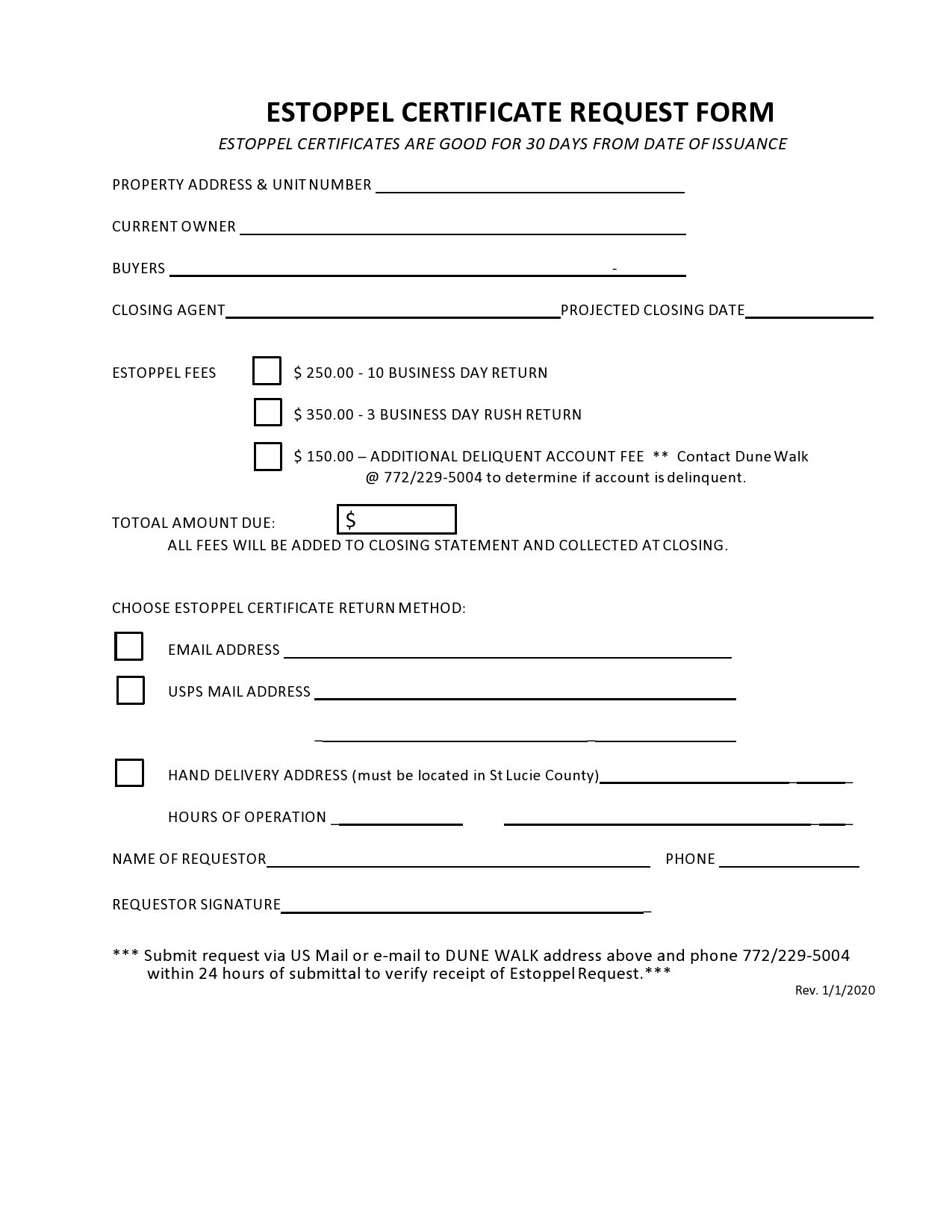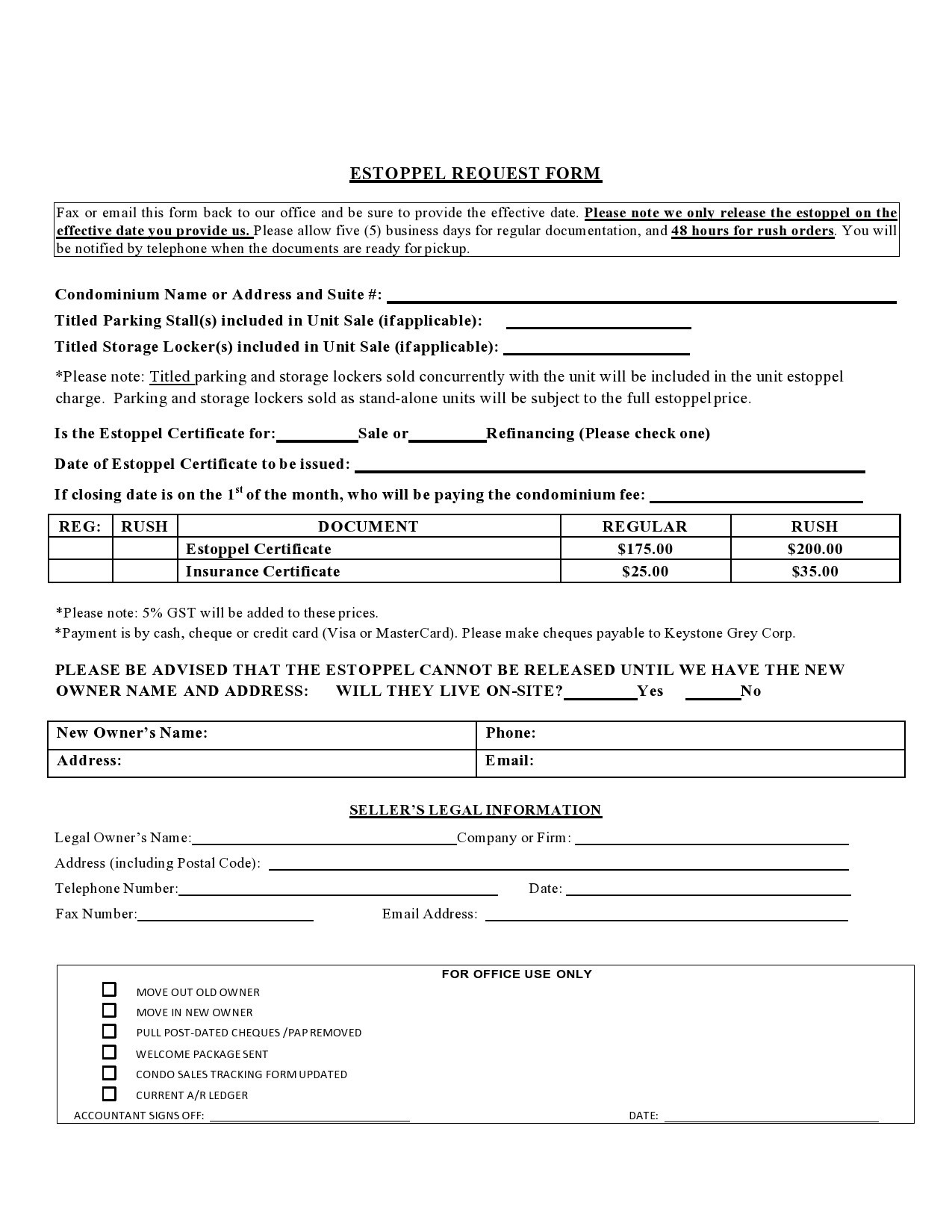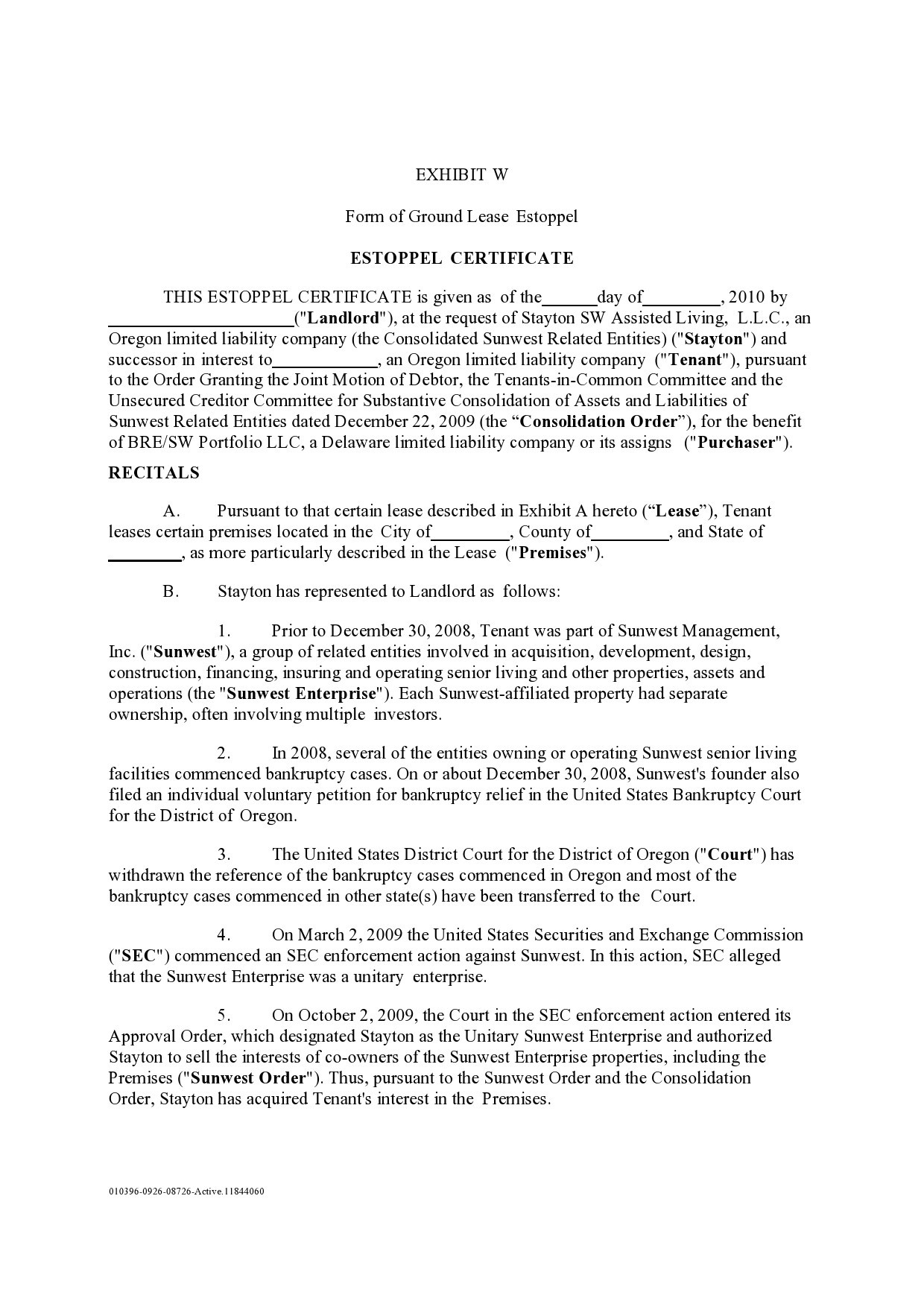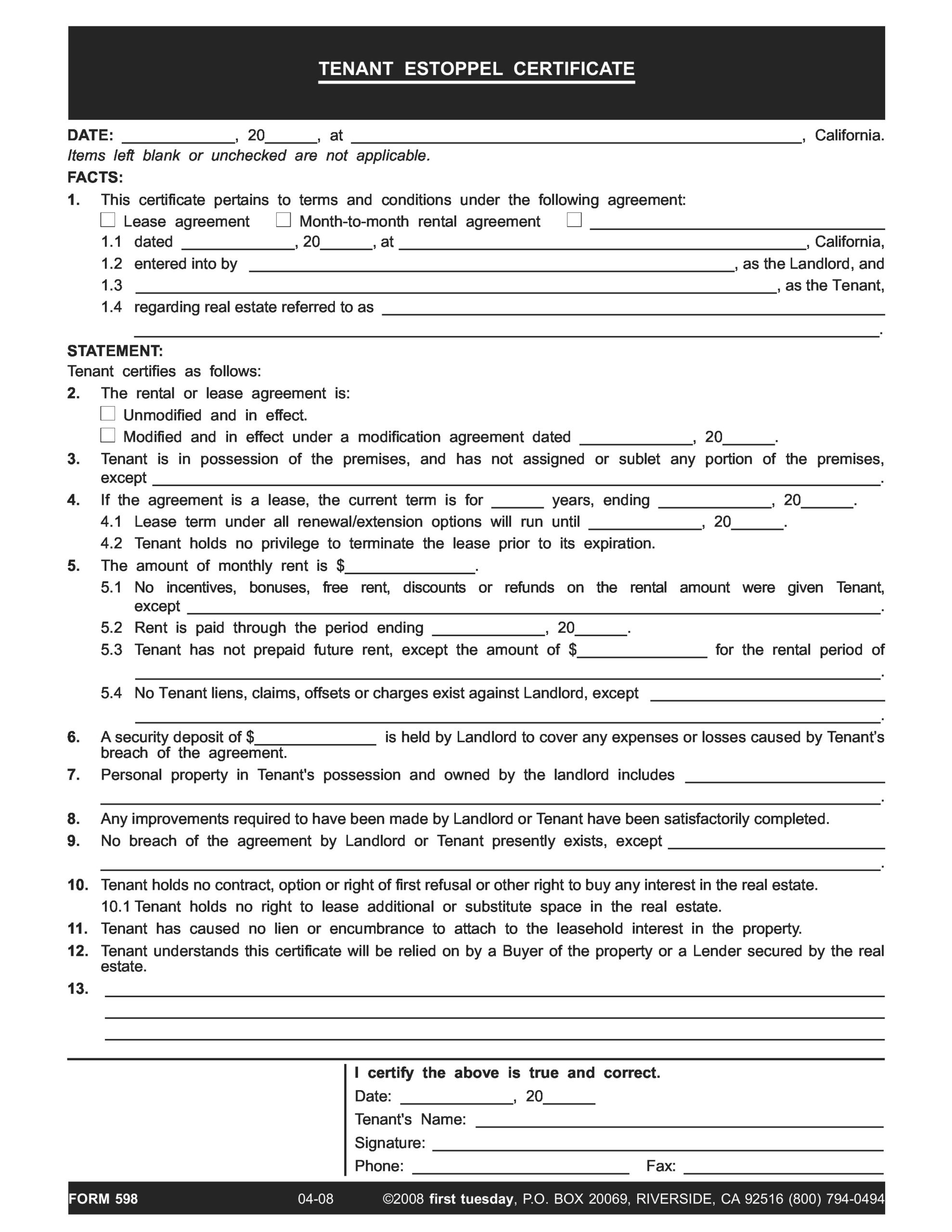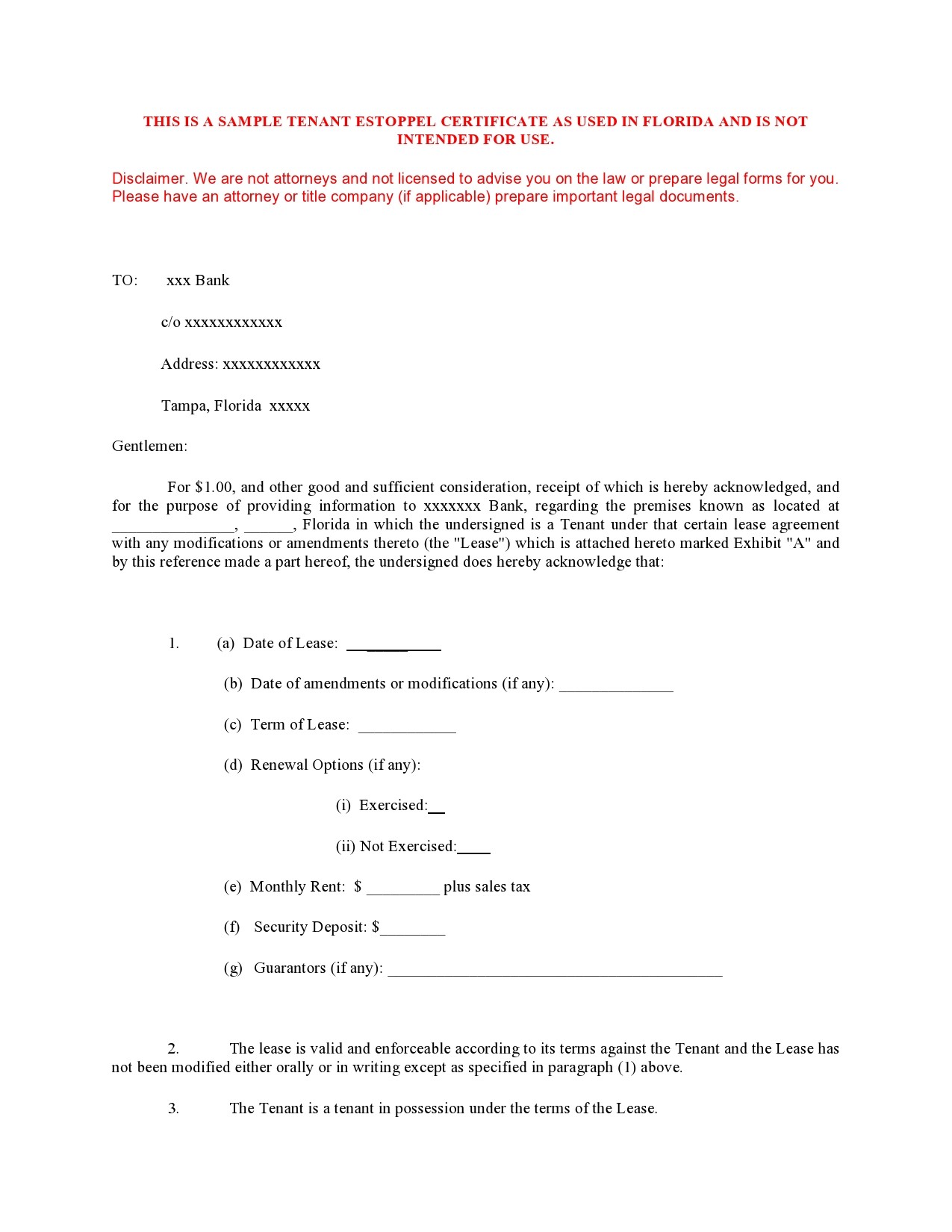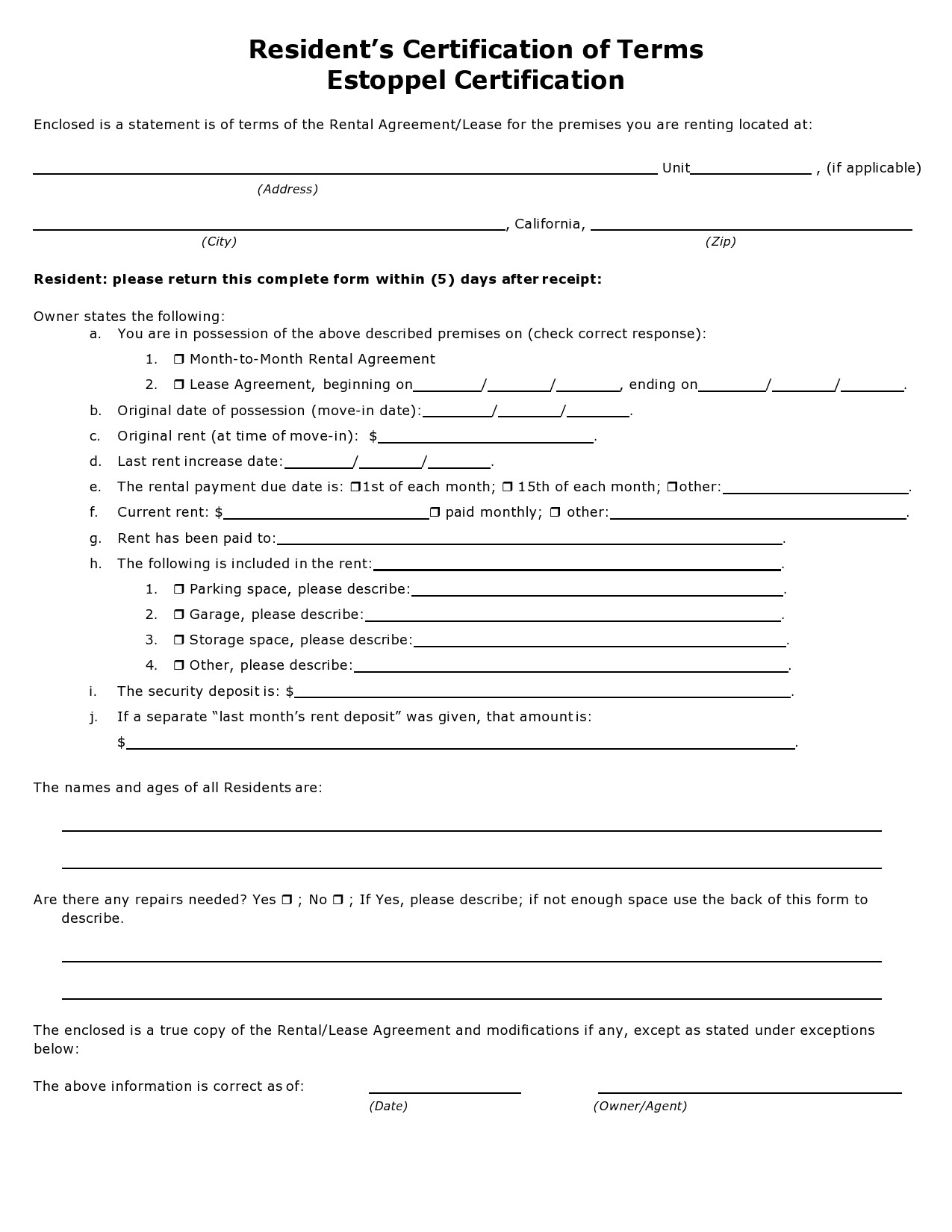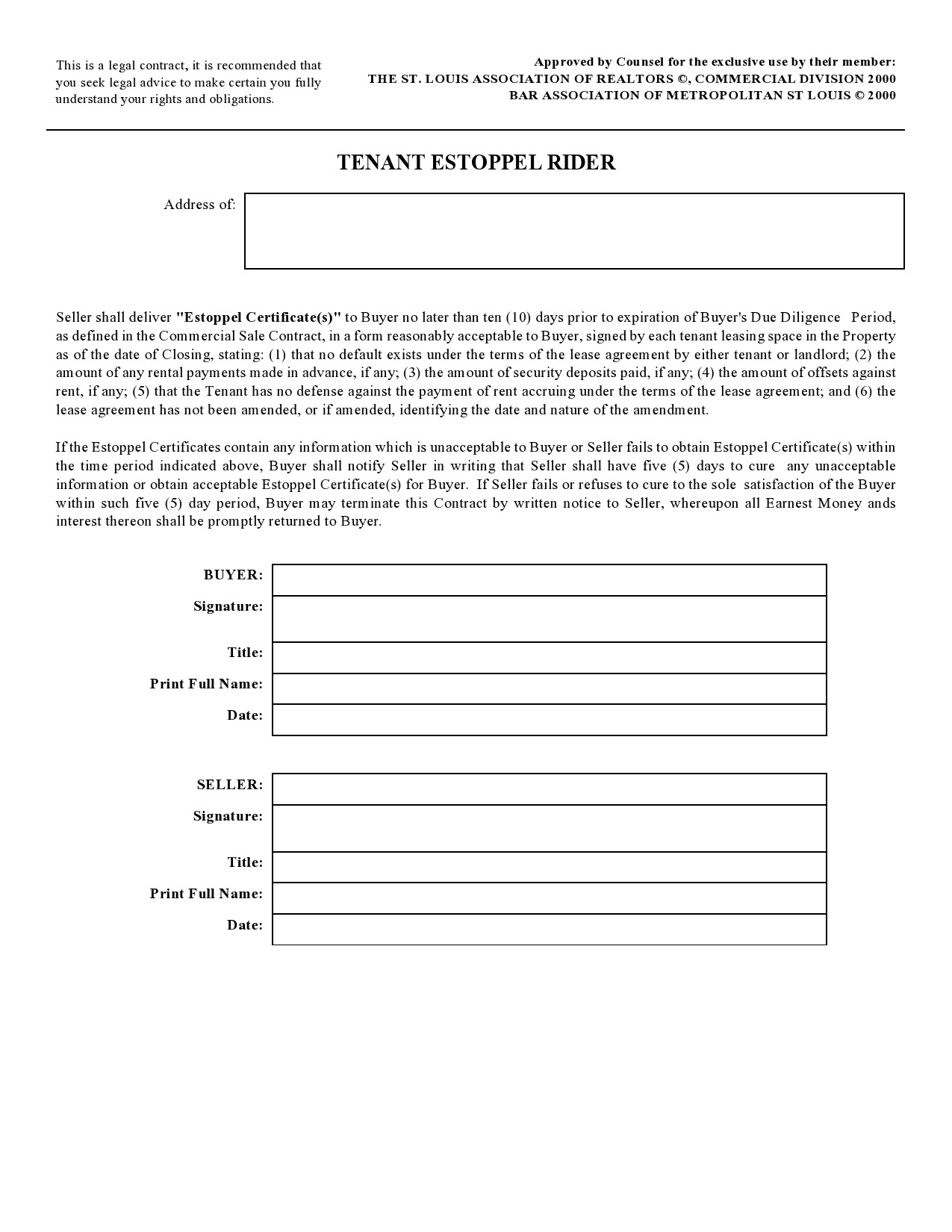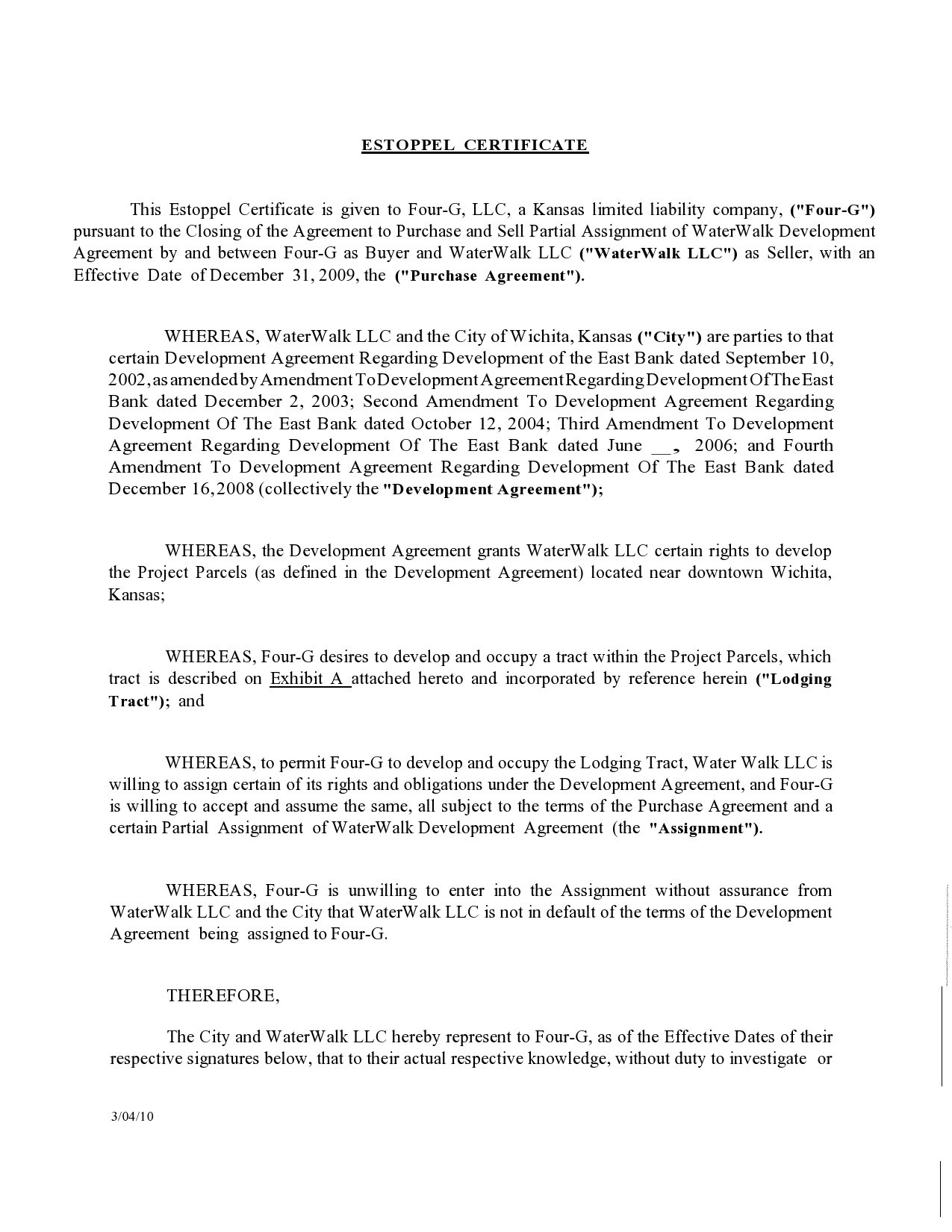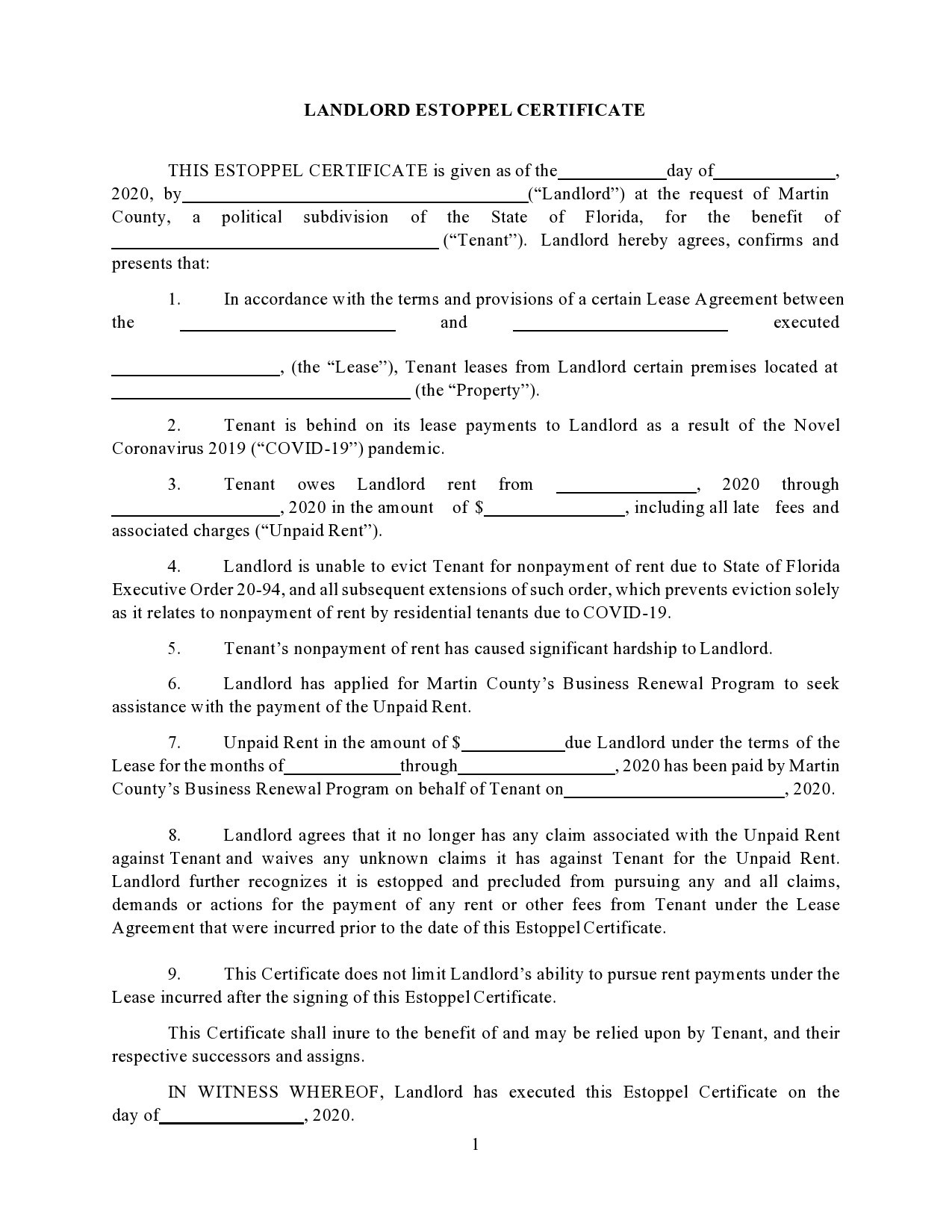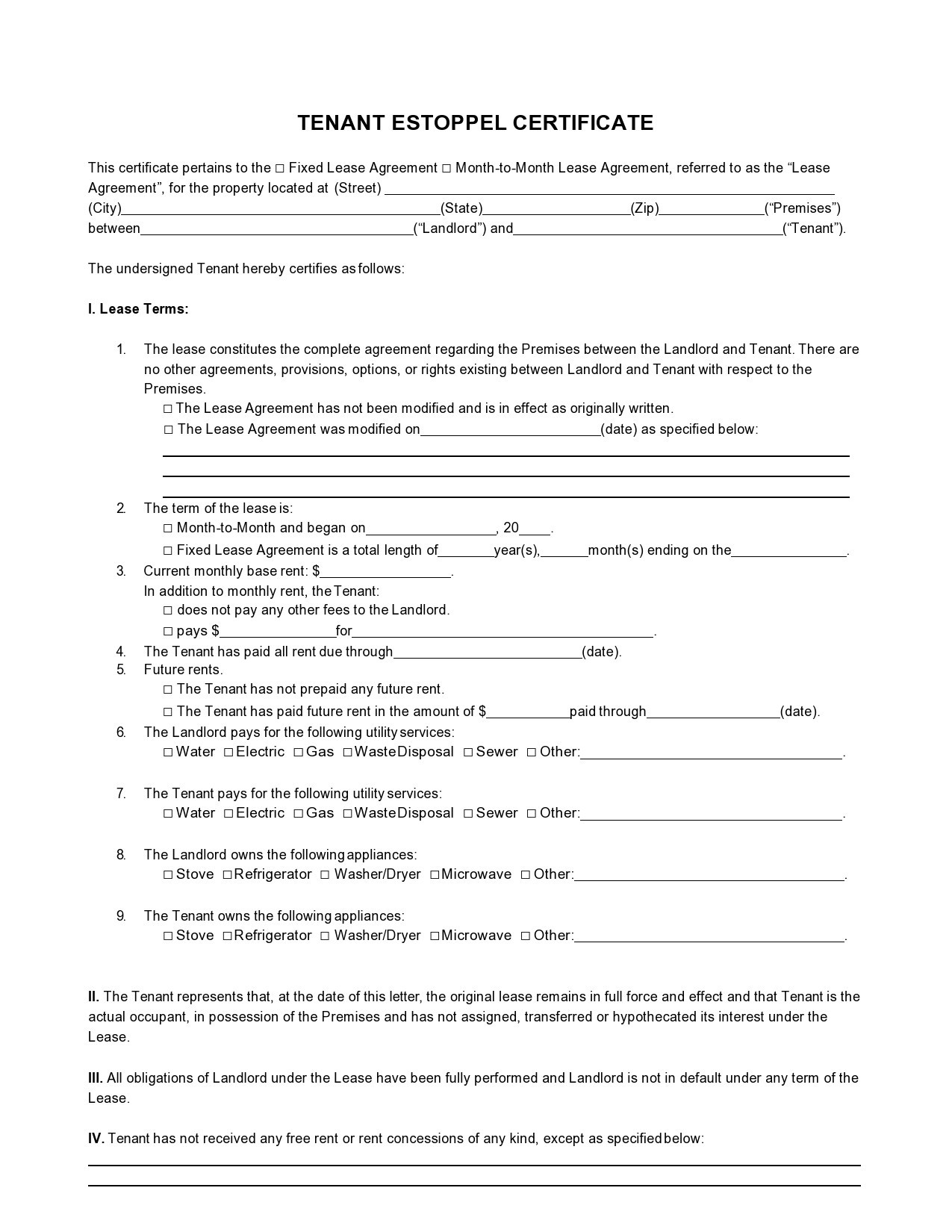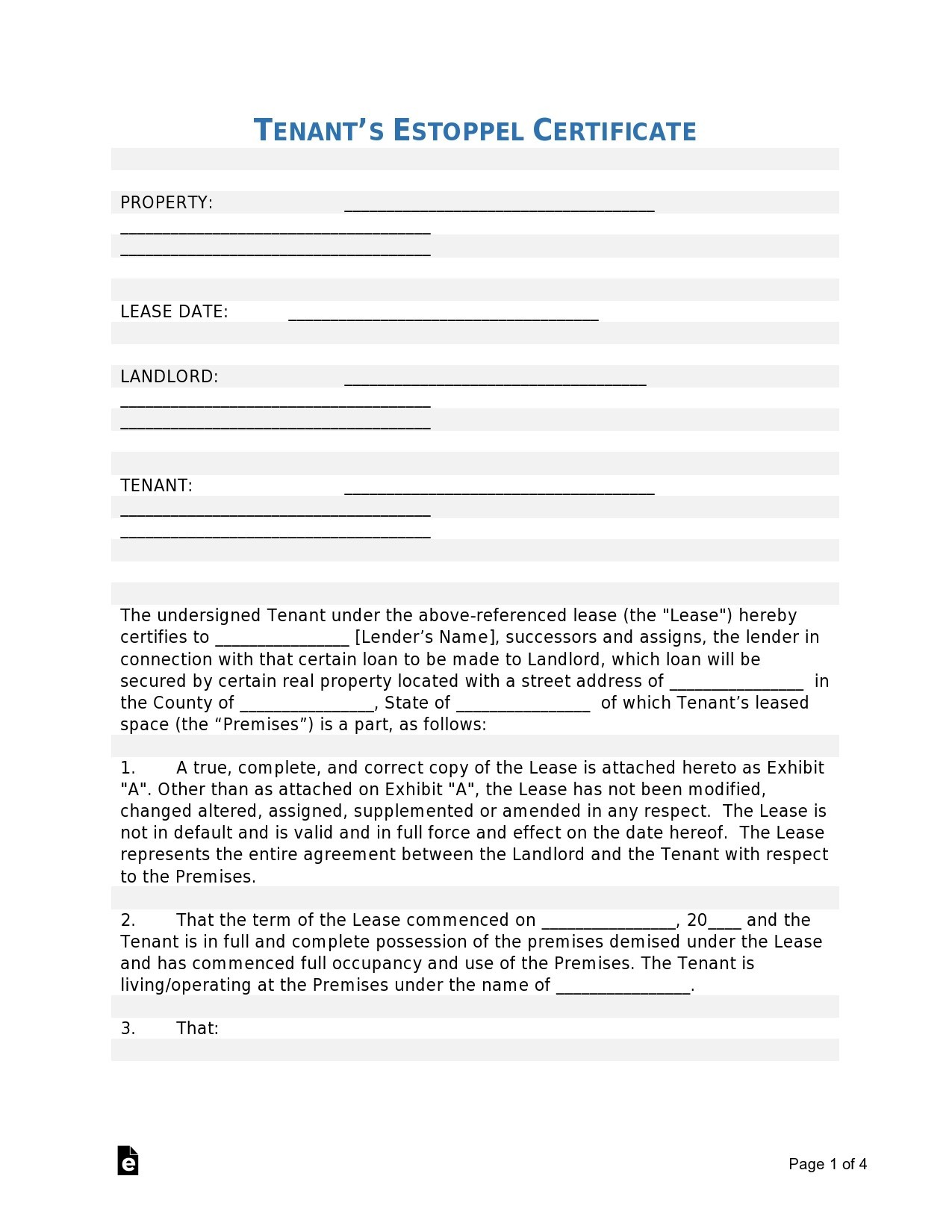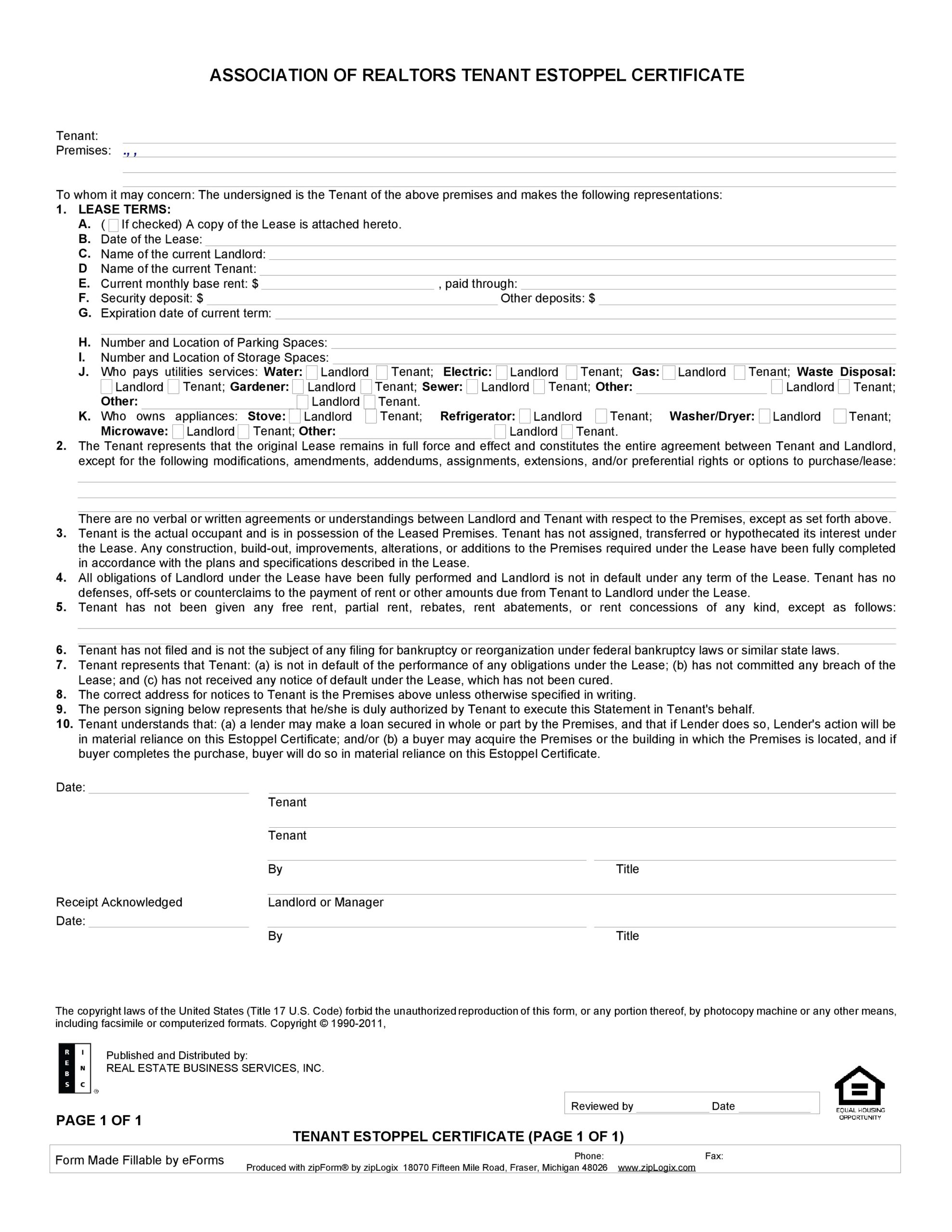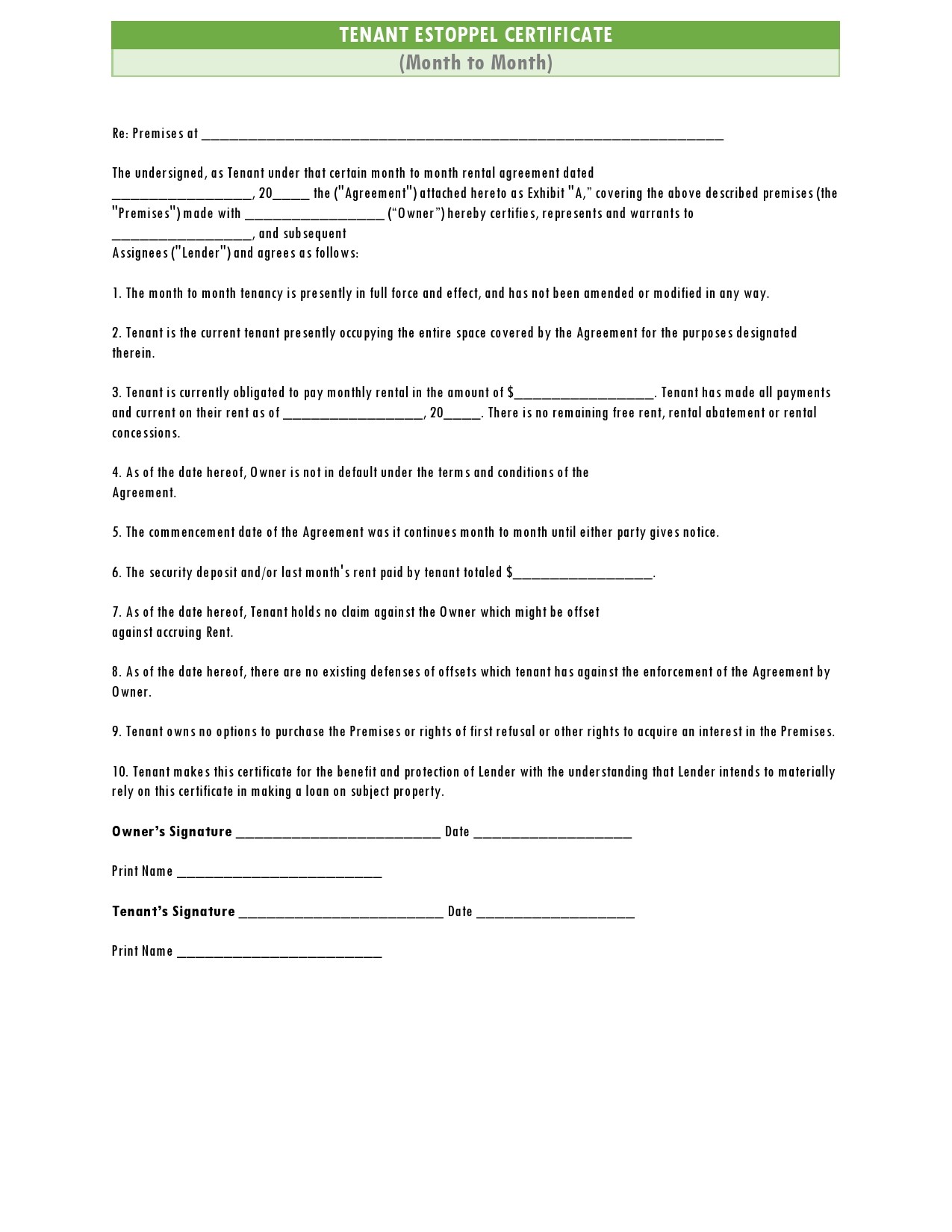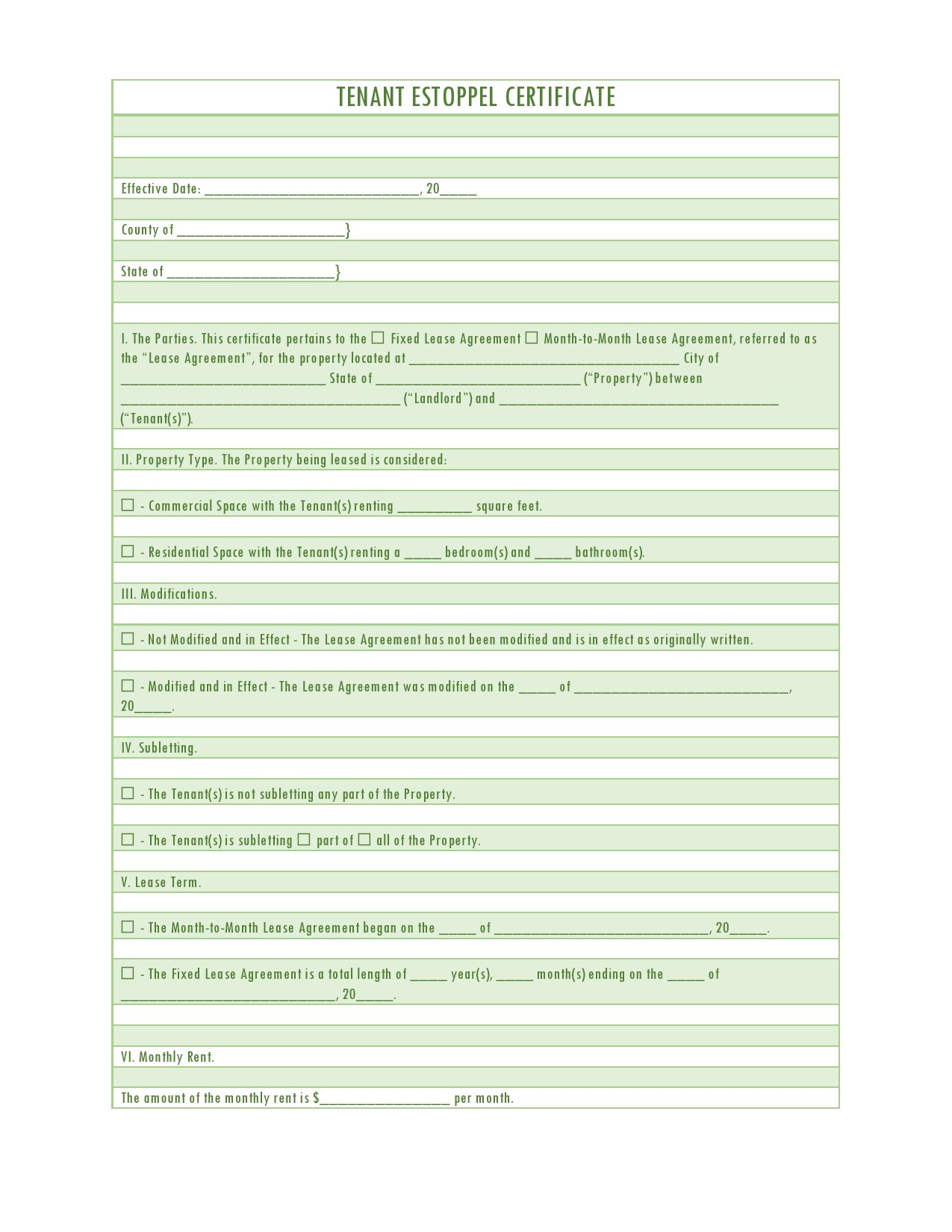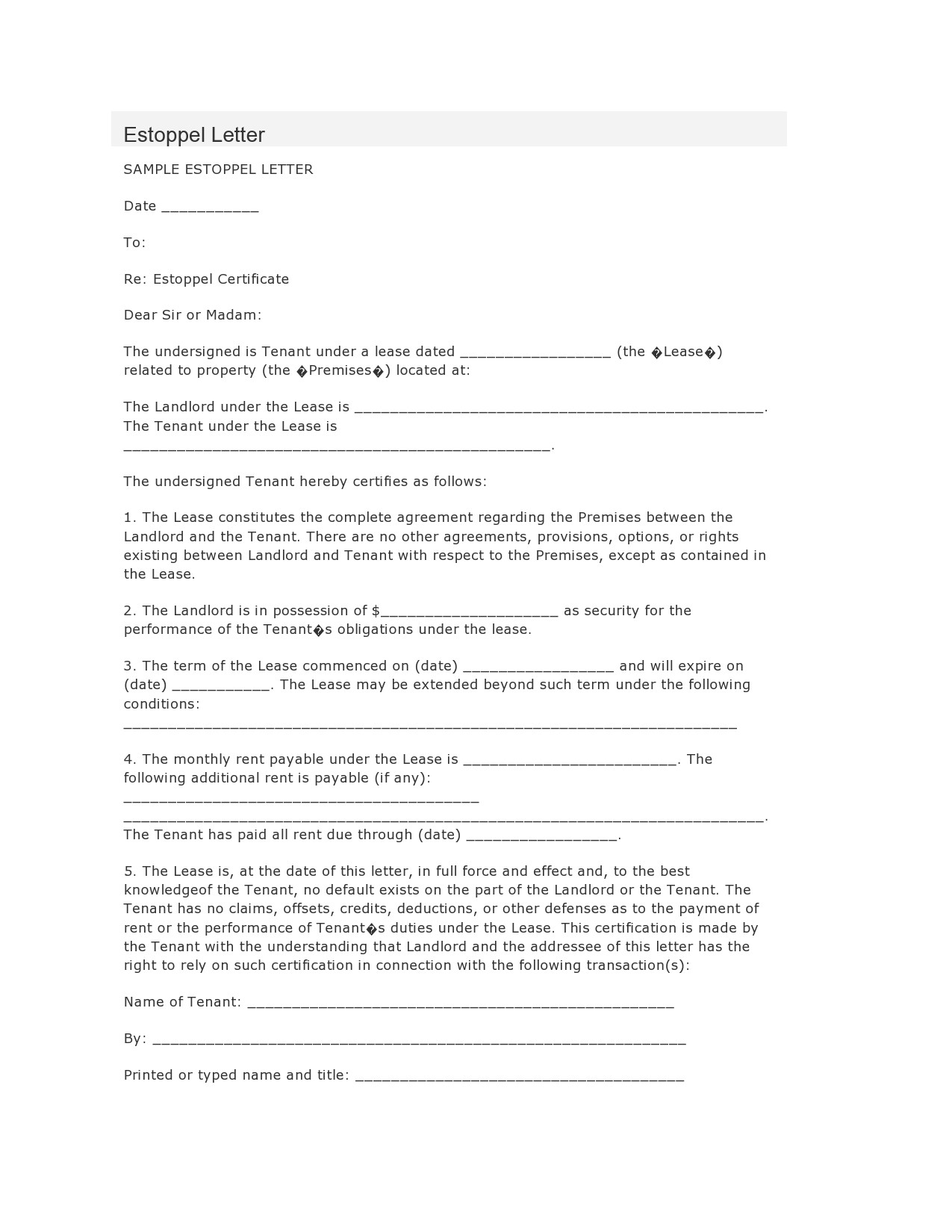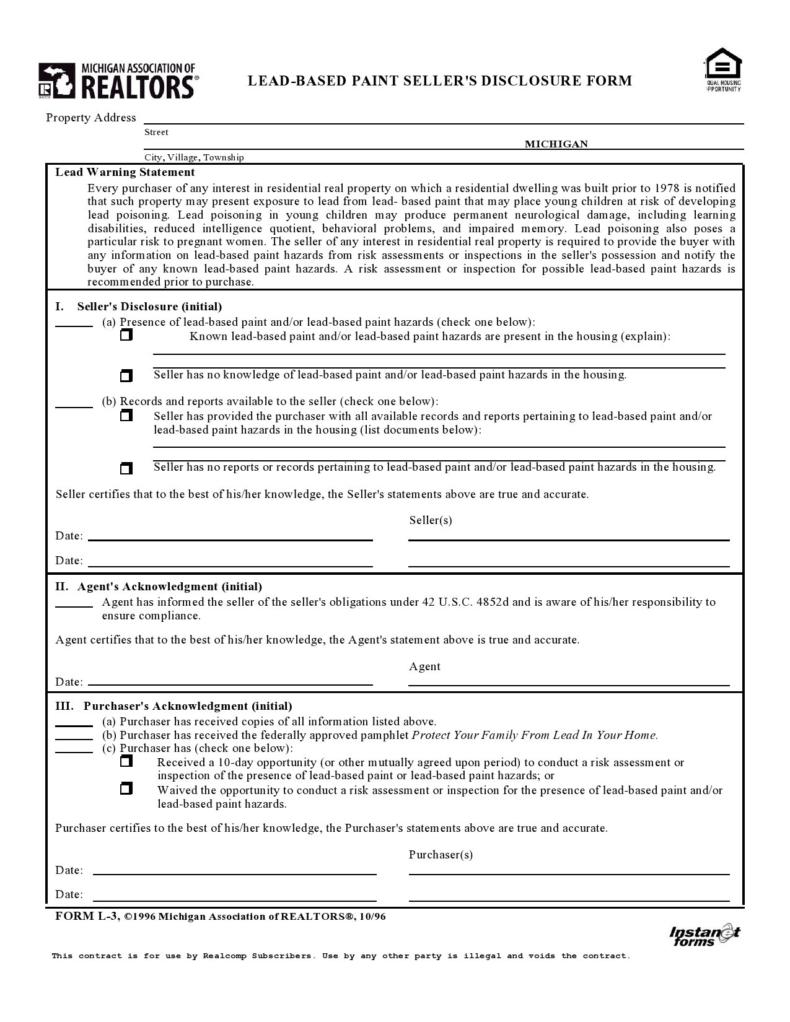When you lease your property, you might need to create an estoppel certificate form to send to your tenant. This document is a principal in law as it works to prevent a person from contradicting anything they have previously stated. This certificate is often used in mortgage and real estate activities.
Table of Contents
Estoppel Certificate Forms
What is an estoppel why is it used?
In many mortgage and real estate deals, an estoppel certificate form is often requested as part of an agreement. This is a document completed and signed by the tenant and used in your proposed transaction as the landlord with a third party.
Before a mortgage lender collateralizes a property occupied by a tenant or a buyer purchases such a property, they first want to confirm the representations you make. For such confirmations, a generic estoppel letter or certificate provides verification regarding the terms of the contract like the rent amount, security deposit amount, and the contract’s expiration.
Moreover, the tenant estoppel form gives the tenant an opportunity to explain if they have claims against you which might influence the decision of a lender or buyer to withdraw from or continue with the transaction you have proposed.
There are some lease agreements that require the tenant to accomplish this certificate. The tenant may also opt to waive their responses by permitting you to accomplish the certificate under specific circumstances.
The presence of this certificate prohibits a tenant from going back on their word and this can essentially provide a promise or proof of cash flow. Aside from this, it can also provide third-party verification.
Remember that this certificate is a confirmation by the tenant that you are not changing or confusing any information that might put you in a more beneficial position. In simpler words, it will hold you and your tenant to the truth.
You can also show the certificate to investors during the stage of due diligence in property acquisition. You can furnish it to lenders during the process of underwriting. In this way, the certificate will give the lender or investor more confidence.
After all, their main objective is to secure a good cash flow in their investment. As such, the contents of the certificate becomes the main concern in making their decision. Although you can use this certificate in court cases, it is not a very common circumstance.
Generic Estoppel Letters
What is included?
An estoppel certificate form is an agreement commonly used in real estate activities to describe the existing conditions of a lease agreement. It may also define your relationship with a tenant and it may include other significant details about the rights of the tenants living in your property.
Based on these, a residential tenant estoppel certificate, therefore, is a summary of the most significant clauses defined in your lease. It is an accurate and factual overview of the status of your lease and you can also consider it as a security measure. Following are the most important details that you should include in a residential or commercial estoppel certificate form:
- Your name and the name of your tenant
- The type of property (commercial or residential)
- The term of your lease
- Details about the rent amount
- The amount of the security deposit
Once the tenant has affixed their signature on this document, it is a confirmation of the accuracy of the terms of the lease and that you have both agreed on them. The tenant has to remember that once they sign the agreement, they relinquish their ability to make any claims that contradict the claims detailed in the certificate.
Tenant Estoppel Forms
What is the purpose of an estoppel certificate?
During the course of a real estate transaction, the request for a generic estoppel letter or certificate can arise in many different contexts. Here are a few examples where you can use an estoppel certificate form:
- When you’re either mortgaging or selling your property and the lender or buyer requests confirmation from your tenant about the status of the current lease.
- You can also provide this certificate in cases when your tenant wants to sublease the property. In this case, the document can make the sub-lessee understand the status of the underlying lease before they sign the sublease.
- You can also furnish the certificate in the course of a corporate transaction. For instance, if the seller is a company or business that leases the property where it operates, the prospective buyer of the business will require a confirmation that the tenant or seller has been in compliance with the terms of the lease before the buyer assumes the role of the tenant or seller.
- In many cases, a prospective buyer of a property might make a request for this certificate should the property get encumbered by an existing document, like a reciprocal easement agreement or a declaration governing maintenance at the property. This buyer must ask the party responsible for the collection of due payments as stated in the operating document like an association. The reason for this is to certify that the current property owner has been responsibly making all of the required payments. As such, the prospective buyer won’t get burdened with past-due payments when they decide to close on the property.
- In rare cases, you can also use this certificate when a buyer assigns their interest in a real estate purchase agreement to a third party. This proposed assignee – the third party – may also request a confirmation that the purchase agreement is in effect and that the current purchaser is not in default under the terms of the purchase contract.
These are some instances that show the importance of this certificate. It can be truly useful in various situations. It’s specifically essential during the process of due diligence as it can limit the risk, especially in a commercial transaction of real estate.
What is a tenant estoppel form?
The tenant estoppel form is a document used in mortgage and real estate activities that serves as a confirmation on the current details between you as a landlord and your tenant while defining your relationship.
It is a document that confirms the truthfulness of all the facts in the agreement. Both you and your tenant must affix their signatures on the certificate. In addition, it also defines the rights of your tenant while working to provide accurate facts about your lease.
Before a lender makes the decision of lending money for a commercial or residential property, it is typical practice to request this certificate. This document must include the following:
- The start date and end date of the lease
- The rent amount that the tenant pays each month
- Copies of the rent payments from the past 3 months to prove that there really is a tenant renting the property
- The tenant’s signature
Commercial Estoppel Certificate Forms
Writing a tenant estoppel certificate
You can start filling in the details for your estoppel certificate form as soon as you have secured the original lease and all other required documentation. Then you can start creating your commercial estoppel certificate form or residential tenant estoppel certificate depending on your purpose:
- Basic details
Input the date when you prepare the document.
Provide the basic details of your lease – for instance, whether it’s a fixed or a monthly agreement.
Provide the complete address of your property including unit numbers.
Write down the full names of both the landlord and the tenant. - Relevant Agreements
This section provides information regarding whether you have modified the lease or sublet together with relevant details and dates. The tenant should also specify if the lease still remains active. - Details of the lease
Provide details on whether the lease is a monthly or fixed-term agreement. Provide the date when your lease agreement started. Specify how long the agreement will remain in effect. Indicate the end date of your lease too.
Provide payment details including the exact rent amount paid and the frequency. State any fees apart from the rent that your tenant pays and what these fees are for. Include the complete date of the last rental payment along with any rent payments that your tenant made in advance. Also, include the exact amounts for each of these payments. Finally, provide the complete amount paid by your tenant for their security deposit. - Provisions
This section contains any details that you want the other party to meet. These can include the following:
If you have any personal property at the address of the rented property, you should provide details on what these are and if your tenant has possession of them.
If you gave your tenant the right to purchase the rental property.
If there are any pending maintenance or repair issues that you need to address and if you have maintained the property adequately.
If there have been any violations to the agreement and whether or not you have already resolved these. Give all relevant details regarding this issue. - Signature
It is in the last part of the document where your tenant will affix their signature and provide the date of the certificate in the presence of a notary public. Your tenant must only sign if they’re in agreement with you about all the terms and conditions in the document.

